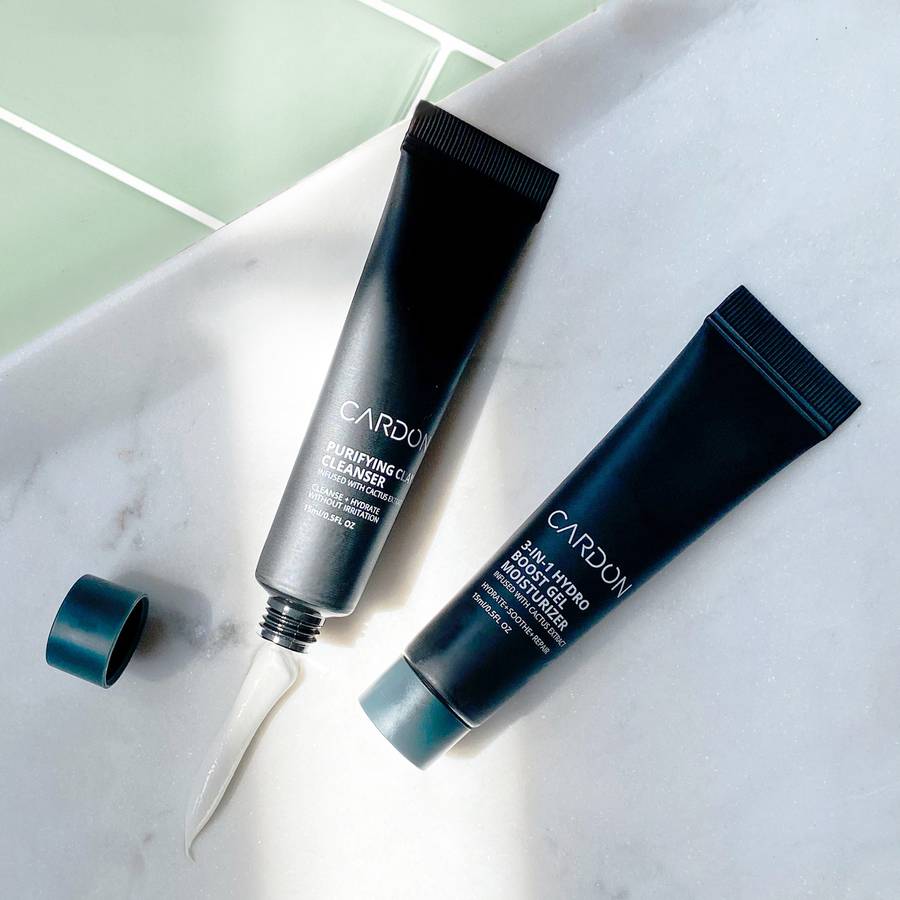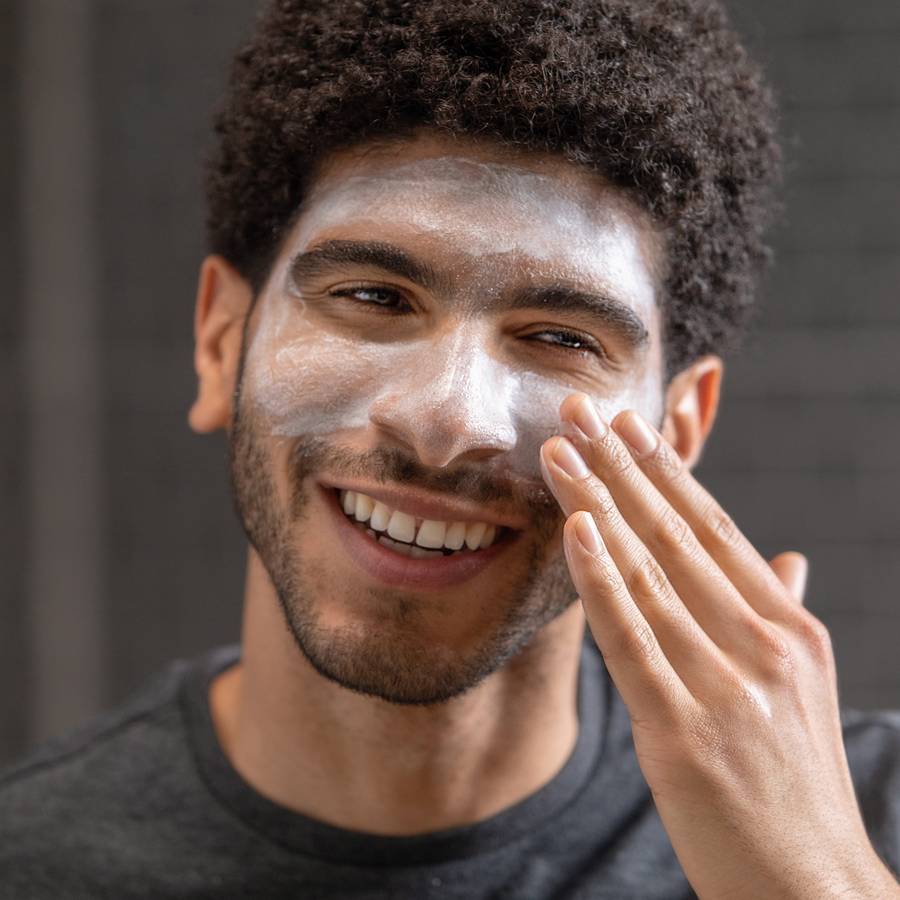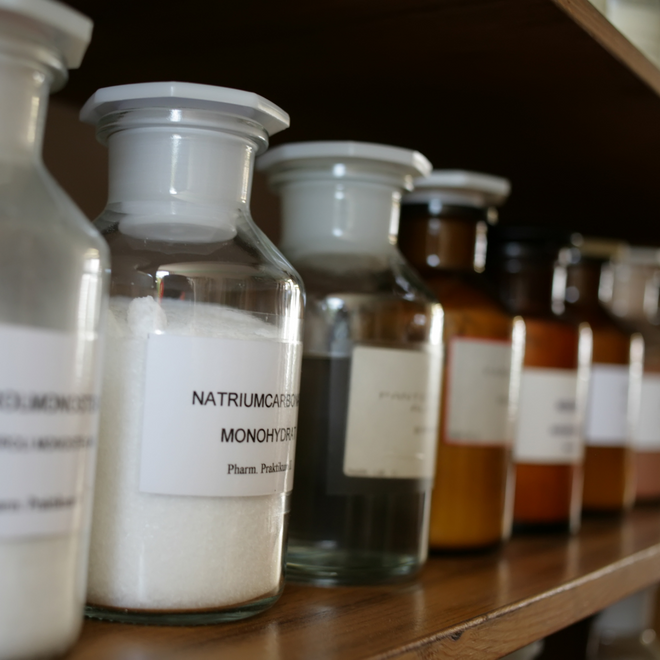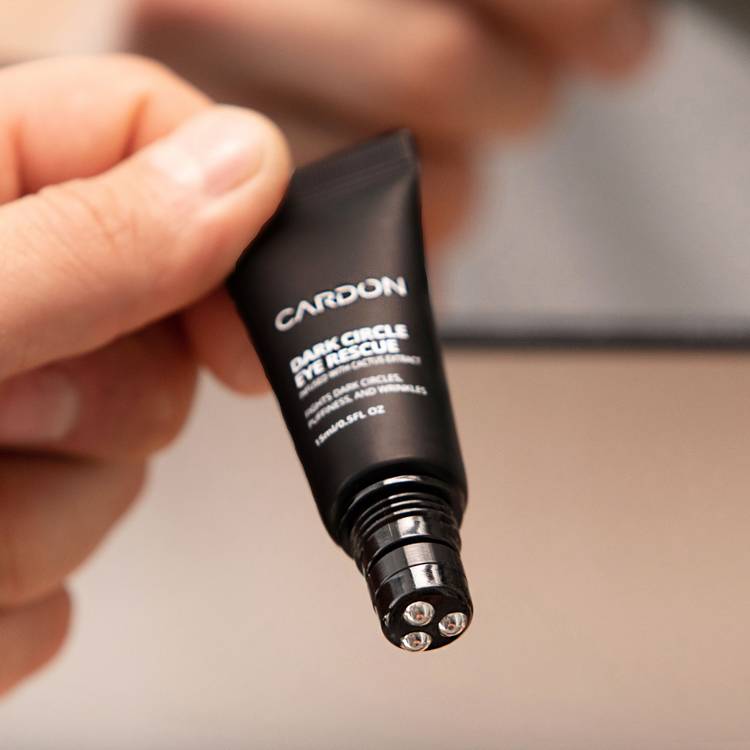Skincare Do’s and Don’ts

There are some tenets to skincare that are universal—those do’s and don’ts that act as guideposts for people of every age and skin type. They’re easy to remember, and just as simple to execute. And surprisingly, many of these tips remain unknown to a large percentage of people.
Perhaps you’re starting a skincare regimen now, or looking to take a more serious approach to your existing one. Regardless of your skincare expertise or experience, you should read up on some of the core commandments that build a foundation of any routine. Below are the skincare do’s and don’ts that we think are most imperative throughout your entire skincare journey.
1. Do: Cleanse First, Moisturize Last
No matter how simple or involved your skincare regimen is, it should always be book-ended with a cleanser and moisturizer. The cleanser rinses away any residue (sweat, grime, product buildup) and allows all successive products to absorb properly, while freeing up pores and preventing clogging and breakouts. Next comes the lightweight products (toners, serums, etc), if you choose to include them. But always save your moisturizer for the end of the regimen, since it seals off the skin and acts as an extra moisture defense barrier—keeping hydration locked inside, and blocking pollution, oxidants, bacteria from stressing and irritating the skin.
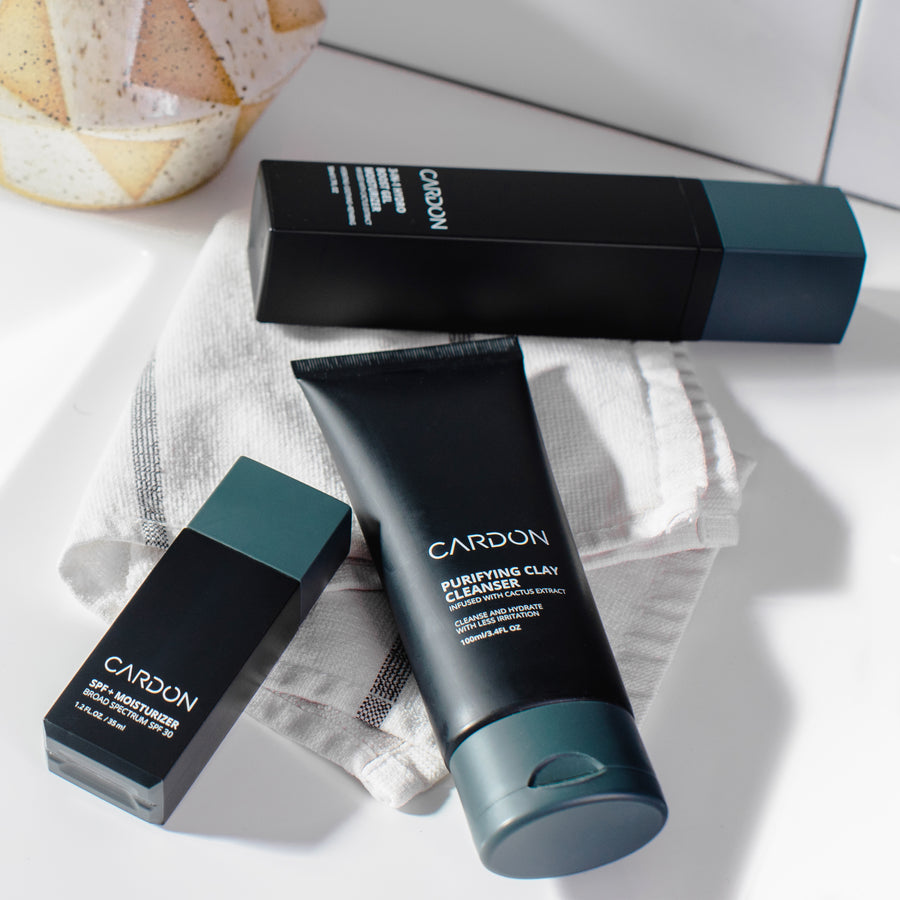

You can, of course, add a layer of SPF over top of the hydrator (better yet, find yourself a double duty solution like our SPF moisturizer that combines replenishing hydration with lightweight UV protection).
Shop the product

Hydro Boost Gel Moisturizer
$35.00
2. Don’t: Over Exfoliate
Routine exfoliation is imperative for maintaining smooth, even-toned skin, as well as for keeping pores clear. The process buffs away or dissolves dead skin cells, depending on whether you choose a physical or chemical exfoliant. The means is a matter of preference, but one thing that is universal is how frequently you should exfoliate. If you use a heavy duty product, then twice a week should suffice; your skin cells cannot regenerate any faster than that, so you’d be wasting product and possibly even irritating skin if you attempt anything further. Some gentle recipes (which will be labeled as such) will allow for more frequent use due to their intentionally lightweight lift, but only if directed.
3. Do: Use Products Supporting Your Skin Type
Are you oily all over? Or just across the brow and down the nose? Or, are you dry all over the face? Perhaps you’re none of the above, and are fortunate enough to enjoy harmonized oil production on the regular. (The industry even calls this condition “normal” despite the fact that most of us are aspiring towards it while navigating oiliness or dryness.) Regardless of your situation, you need to pick products and build a regimen that works with your skin to achieve “normalcy” without overdrying and irritating skin, or without aggravating more oil accumulation and clogging pores. These aren’t the only conditions of note, either: Acne-prone skin is very much a thing, as is sensitive skin.
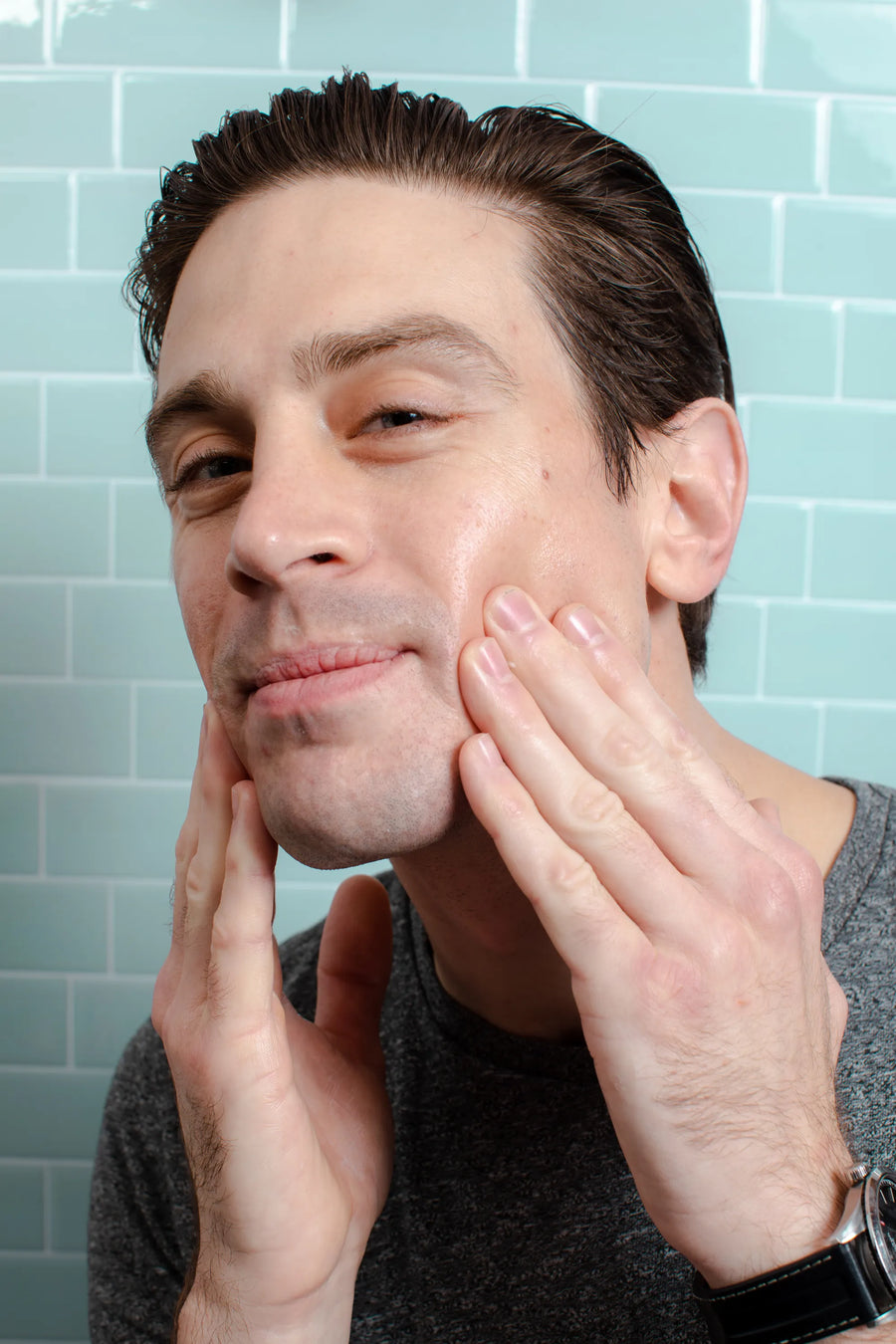

You can be susceptible to hyperpigmentation, ingrown hairs, and so much more. But the point remains the same: Understand your skin, and build a regimen that makes your life easier and gives you real results. In the meantime, read Cardon’s skincare guides for Oily Skin and Dry/Sensitive Skin.
4. Don’t: Skip the Dermo
A semi-annual visit to the dermatologist will ensure that you meet your skincare goals, from maintaining a clear complexion to preserving your youthful buoyancy as long as possible.Not only that, but a dermo can diagnose and treat scalp conditions, hair loss, questionable moles, and everything between. Most people will only summon a dermo when they have a visible, tangible problem, rather than proactively schedule check-ins to get ahead of numerous big issues, including something as severe as skin cancer. Strive for the latter: visit your dermatologist twice a year and be proactive about skin health.


5. Do: Wear SPF Daily
One thing your dermatologist will advise is daily SPF use—and so we’ll advise the same here and now. The baseline is SPF30, applied whenever you are about to experience sun exposure (even in winter, even when sitting by the window). UV rays work their evil year round, penetrating cloud cover and glass, and they’re also the biggest culprits behind “visibly aged skin” (rough or splotchy texture, loss of resilience and firmness, wrinkling, hyperpigmentation, etc). Daily SPF might seem excessive each morning, but it will be something you appreciate decades down the road, when you’ve still got the firmest, brightest complexion of all your contemporaries. It’s especially easy to get via a lightweight SPF-packed moisturizer in your morning regimen.


Shop the product
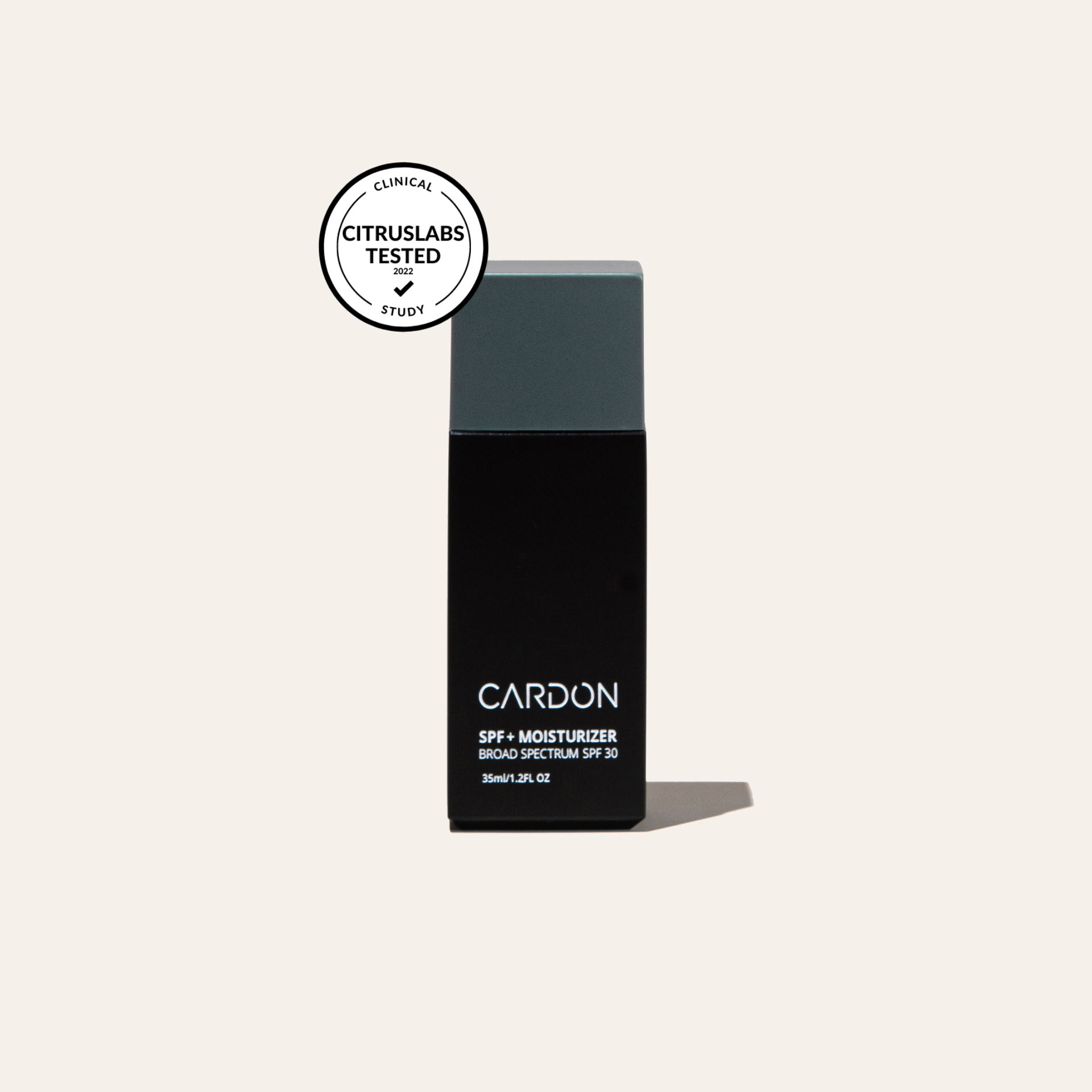
Daily SPF + Moisturizer
$24.00
6. Don’t: Cut Corners on Your Shave
Your skin’s response to a razor shave is directly related to the care you put into the process. That means using clean, sharp razors (replaced every 6-8 shaves, or 2-3 weeks, whichever is sooner). That means readying skin with warm water and a pre-shave oil. That means slow, steady razor strokes in the direction of the grain of hair growth. That means calming skin and closing pores with a cool splash of water followed by a balancing, toning aftershave. That means finishing with a refreshing, soothing hydrator to help skin recover. In short, that means taking it easy, and not skipping or rushing any steps along the way.
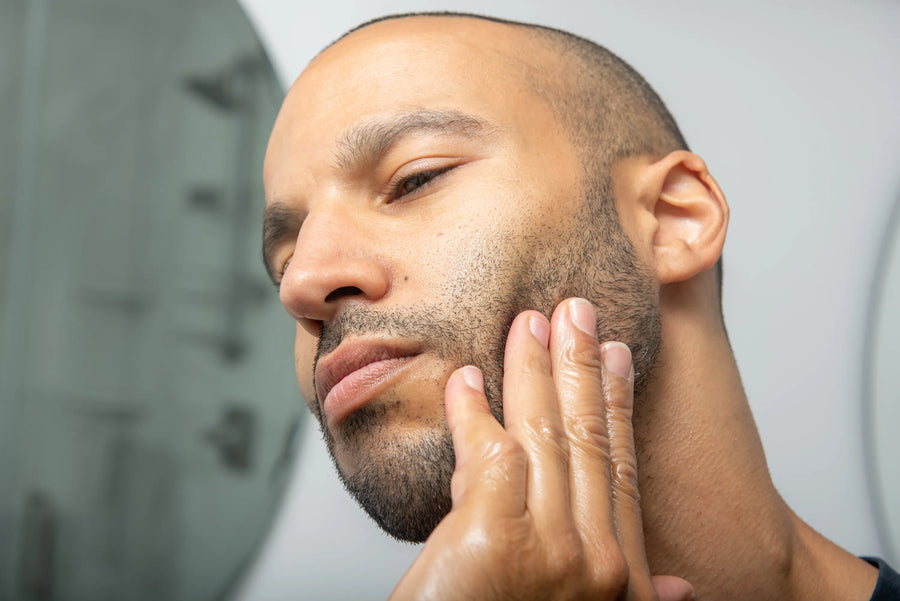

7. Do: Play a Long Game
We often expect overnight miracles with our skincare regimen, as if a single application of moisturizer will give us the best skin of our life. On the contrary: While many products offer immediate benefits (like sun protection, or momentary lifting and firming effects), the truth is that you are actually playing a long game. You do all of this in order to practice “skincare fitness”. It’s like maintaining a healthy lifestyle overall, instead of eating a salad between major binges, simply to feel better about ourselves. The most effective regimen is one built on sustainability and longevity. The people who adhere to that will see the biggest, brightest fruits of their labor—for all of their days.
8. Don’t: Ignore Budding Acne
If you can see or feel a pimple on your skin, then it’s immediately time to act. Don’t touch it let alone squeeze it, please. Instead, treat it with a salicylic acid spot treatment (either a spot cream or a pimple patch). The ingredient will seep into the skin and break apart whatever gunk is clogging the pore, thus healing it from the inside and hopefully preventing you from having to stare at a volcano on your face—as well as the dark spot it leaves behind for the next few months. If you act fast, you really can experience an overnight miracle with these products, and wake up to clear, smooth complexion yet again.
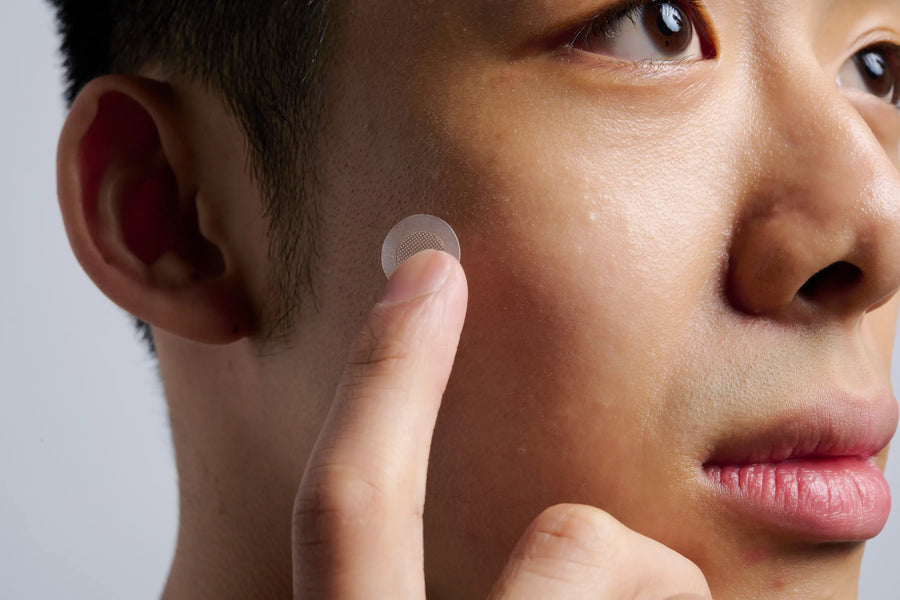

Shop the collection
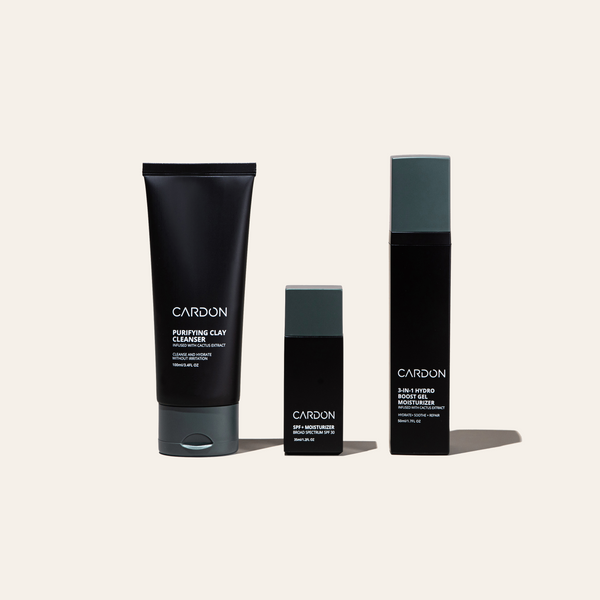
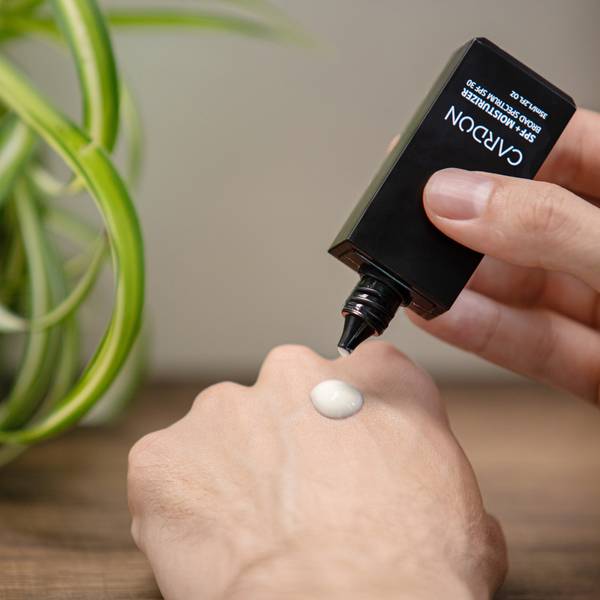
Beginners
Essentials Skincare Set
good for:
Everything you need, nothing you don’t—the Essentials Set is your skincare starter pack. Just cleanse, moisturize, and protect. We took the guesswork out of developing a skincare routine. This is all you need for everyday skin health.
Includes Steps:
- 01 Purifying Clay Cleanser
- 02 Daily SPF + Moisturizer
- 03 Hydro Boost Gel Moisturizer
Never go empty! Subscribe + Save 10%
Essentials Skincare Set
good for:
Everything you need, nothing you don’t—the Essentials Set is your skincare starter pack. Just cleanse, moisturize, and protect. We took the guesswork out of developing a skincare routine. This is all you need for everyday skin health.
Includes Steps:
- 01 Purifying Clay Cleanser
- 02 Daily SPF + Moisturizer
- 03 Hydro Boost Gel Moisturizer
Never go empty! Subscribe + Save 10%

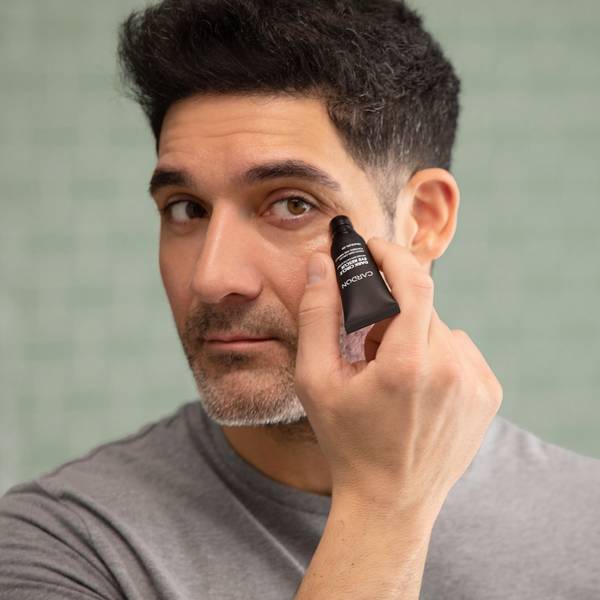
seller
Anti-Aging Skincare Set
good for:
Life comes at you fast. That’s why we developed our Anti-Aging Skincare Set full of just what you need to tackle fine lines, rough texture, and other signs of aging in the skin.
From protecting skin all day long to boosting its ability to repair and rebuild overnight, your past, present, and future selves will thank you.
Includes Steps:
- 01 Dark Circle Eye Rescue
- 02 Purifying Clay Cleanser
- 03 Daily SPF + Moisturizer
- 04 Hydro Boost Gel Moisturizer
Never go empty! Subscribe + Save 10%
Anti-Aging Skincare Set
good for:
Life comes at you fast. That’s why we developed our Anti-Aging Skincare Set full of just what you need to tackle fine lines, rough texture, and other signs of aging in the skin.
From protecting skin all day long to boosting its ability to repair and rebuild overnight, your past, present, and future selves will thank you.
Includes Steps:
- 01 Dark Circle Eye Rescue
- 02 Purifying Clay Cleanser
- 03 Daily SPF + Moisturizer
- 04 Hydro Boost Gel Moisturizer
Never go empty! Subscribe + Save 10%
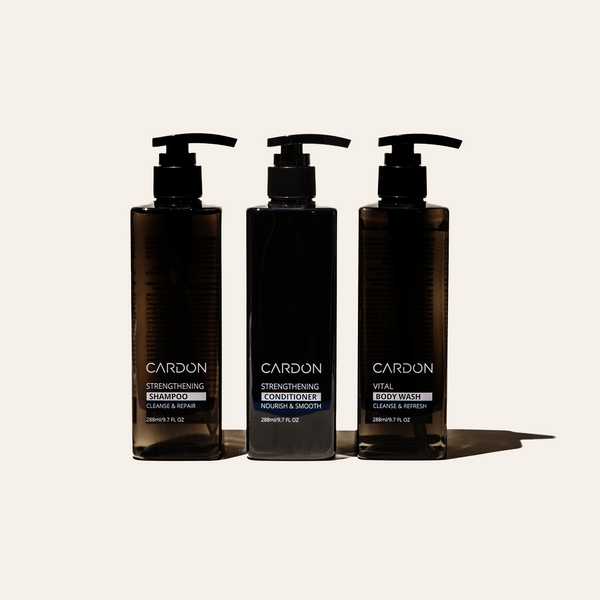
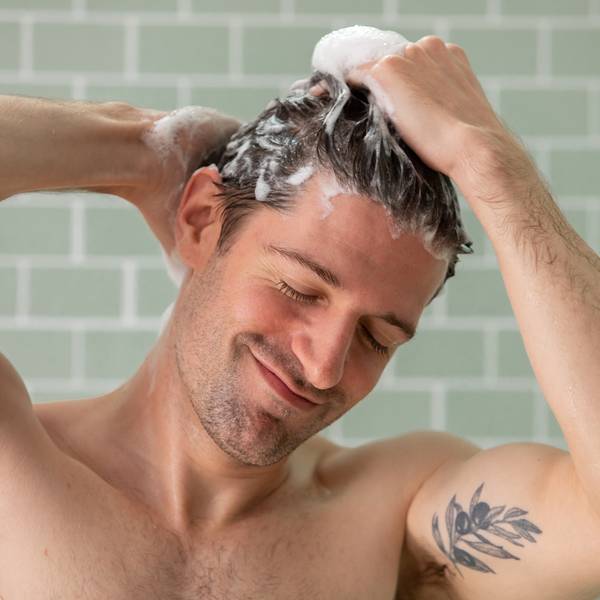
Hair + Body Shower Set
good for:
New + Improved: Same thickening formula now with biotin! The Hair + Body Shower Set has everything you need for an invigorating showertime routine, going beyond cleansing to strengthen, repair, and soothe your hair and skin. You—and your houseguests—will thank you for ditching the 3-in-1 for this trio.
*Vital Body Wash – winner of the 2022 GQ Grooming Awards
Includes Steps:
- 01 Hair Thickening + Strengthening Shampoo
- 02 Hair Thickening + Strengthening Conditioner
- 03 Vital Body Wash
Never go empty! Subscribe + Save 10%
Hair + Body Shower Set
good for:
New + Improved: Same thickening formula now with biotin! The Hair + Body Shower Set has everything you need for an invigorating showertime routine, going beyond cleansing to strengthen, repair, and soothe your hair and skin. You—and your houseguests—will thank you for ditching the 3-in-1 for this trio.
*Vital Body Wash – winner of the 2022 GQ Grooming Awards
Includes Steps:
- 01 Hair Thickening + Strengthening Shampoo
- 02 Hair Thickening + Strengthening Conditioner
- 03 Vital Body Wash
Never go empty! Subscribe + Save 10%

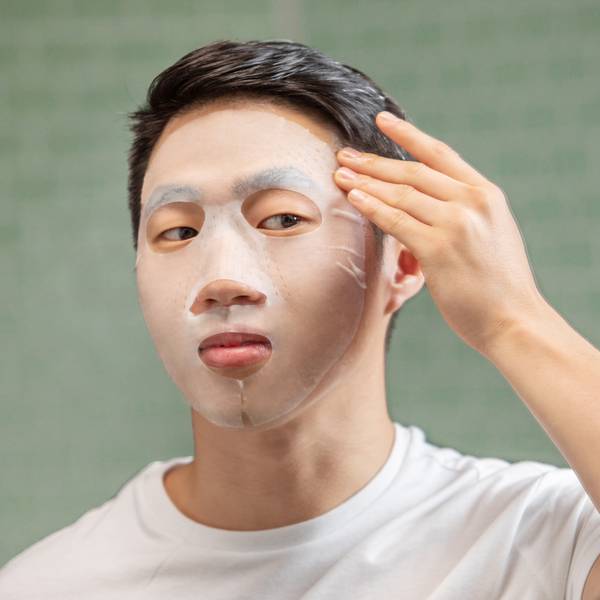
Dry Skin Set
good for:
Skin feeling a bit thirsty? The Dry Skin Set was crafted specifically for those with a dry skin type.
If you deal with flakiness, dull complexion, visible fine lines, red patches, or any combination of the above, this set was made for you. This is all you need to hydrate your skin—and keep it hydrated.
Includes Steps:
- 01
- 02 Dark Circle Eye Rescue
- 03 Daily SPF + Moisturizer
- 04 Hydro Boost Gel Moisturizer
- 05 Cactus Soothing Face Mask
Never go empty! Subscribe + Save 10%
Dry Skin Set
good for:
Skin feeling a bit thirsty? The Dry Skin Set was crafted specifically for those with a dry skin type.
If you deal with flakiness, dull complexion, visible fine lines, red patches, or any combination of the above, this set was made for you. This is all you need to hydrate your skin—and keep it hydrated.
Includes Steps:
- 01
- 02 Dark Circle Eye Rescue
- 03 Daily SPF + Moisturizer
- 04 Hydro Boost Gel Moisturizer
- 05 Cactus Soothing Face Mask
Never go empty! Subscribe + Save 10%
.png?v=1701688836389&options=w_600)

Dark Circles Skincare Set
good for:
All work and no play makes for dull skin.
The Dark Circles Skincare Set is perfect for those looking to brighten and revive dull and tired looking skin. Cleanses debris and grime from the day, depuffs and treats under eye bags, and rehydrates while soothing the skin in your sleep.
Includes Steps:
- 01 Purifying Clay Cleanser
- 02 Dark Circle Eye Rescue
- 03 Hydro Boost Gel Moisturizer
Never go empty! Subscribe + Save 10%
Dark Circles Skincare Set
good for:
All work and no play makes for dull skin.
The Dark Circles Skincare Set is perfect for those looking to brighten and revive dull and tired looking skin. Cleanses debris and grime from the day, depuffs and treats under eye bags, and rehydrates while soothing the skin in your sleep.
Includes Steps:
- 01 Purifying Clay Cleanser
- 02 Dark Circle Eye Rescue
- 03 Hydro Boost Gel Moisturizer
Never go empty! Subscribe + Save 10%
.png?v=1671636443230&options=w_600)
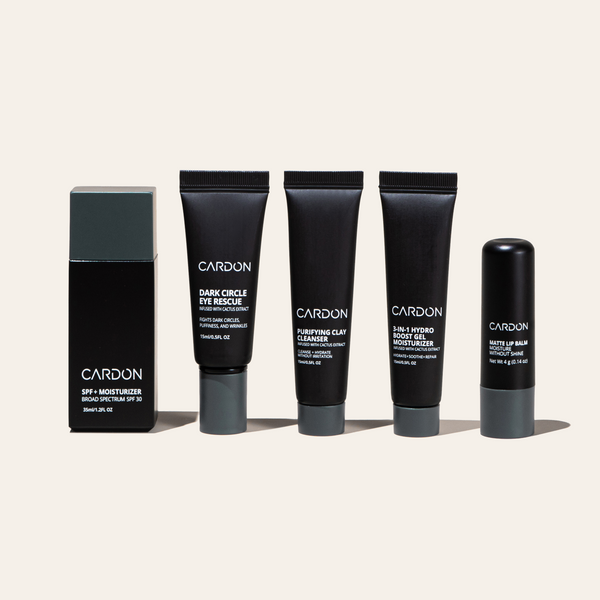
Limited Edition Jet Set Travel Kit
good for:
NEW! Limited Edition Jet Set Travel Kit with Dopp Kit.
With our new Jet Set Travel Kit, you can ditch the hotel samples for an on-the-go routine built with your skin in mind. These five simple steps cover all the bases– from cleansing your face to hydrating your lips– and they're all you need to pack before you hit the road. And, yes, it’s TSA-approved.
Includes Steps:
- 01 Daily SPF + Moisturizer
- 02 Dark Circle Eye Rescue
- 03 Clay Cleanser Sample, 15ml
- 04 Hydro Boost Gel Sample, 15ml
- 05 Matte Lip Balm
"I am a 55 years old and I have started to show my age on my face. After a long day in an aircraft cabin, this is exactly what my skin needs. It doesn’t take much time to complete and the results are worth it." – Jerri P.
Limited Edition Jet Set Travel Kit
good for:
NEW! Limited Edition Jet Set Travel Kit with Dopp Kit.
With our new Jet Set Travel Kit, you can ditch the hotel samples for an on-the-go routine built with your skin in mind. These five simple steps cover all the bases– from cleansing your face to hydrating your lips– and they're all you need to pack before you hit the road. And, yes, it’s TSA-approved.
Includes Steps:
- 01 Daily SPF + Moisturizer
- 02 Dark Circle Eye Rescue
- 03 Clay Cleanser Sample, 15ml
- 04 Hydro Boost Gel Sample, 15ml
- 05 Matte Lip Balm
"I am a 55 years old and I have started to show my age on my face. After a long day in an aircraft cabin, this is exactly what my skin needs. It doesn’t take much time to complete and the results are worth it." – Jerri P.
Cardon Products Are
Easy to Use
We never create two products when we can achieve the same results with one. Cardon products are designed to be easy to use every day.
Backed By Korean Innovation
Korean R&D is two decades ahead of the rest of the world. Cardon products use the highest quality, most effective ingredients out there.
Non-Toxic
Finally, an ingredient label you can feel good about. Every ingredient in Cardon products is good for your skin, and easy on the mind.

.png?v=1671640176423w_600)
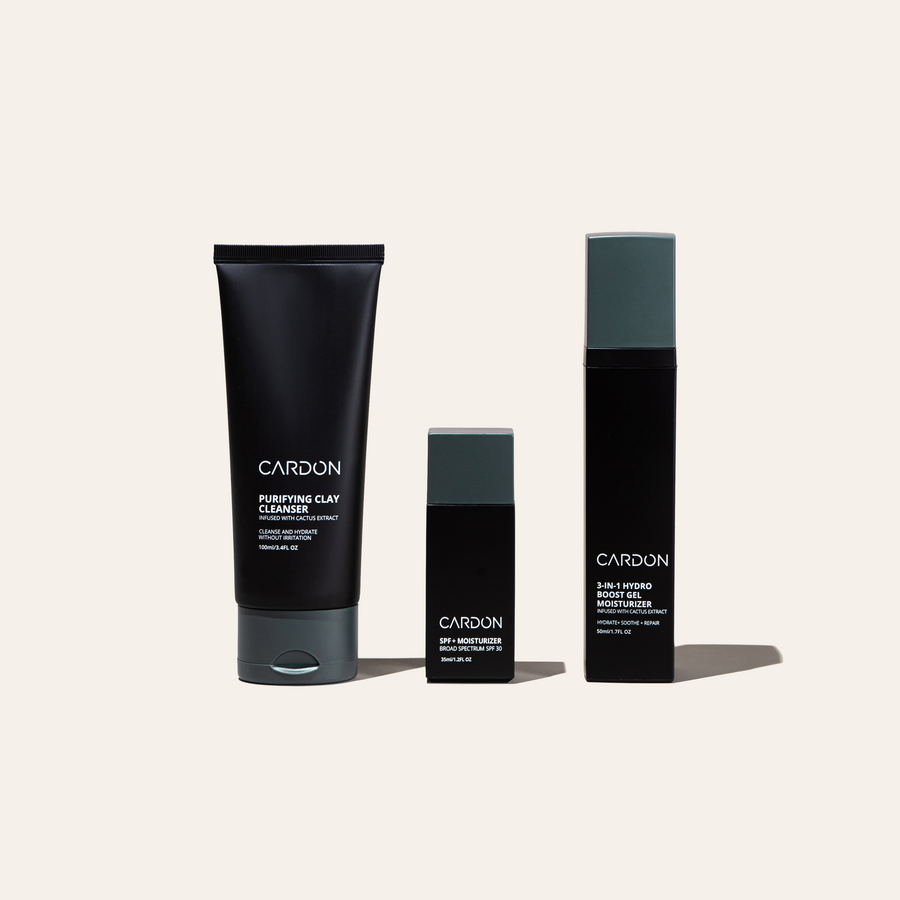

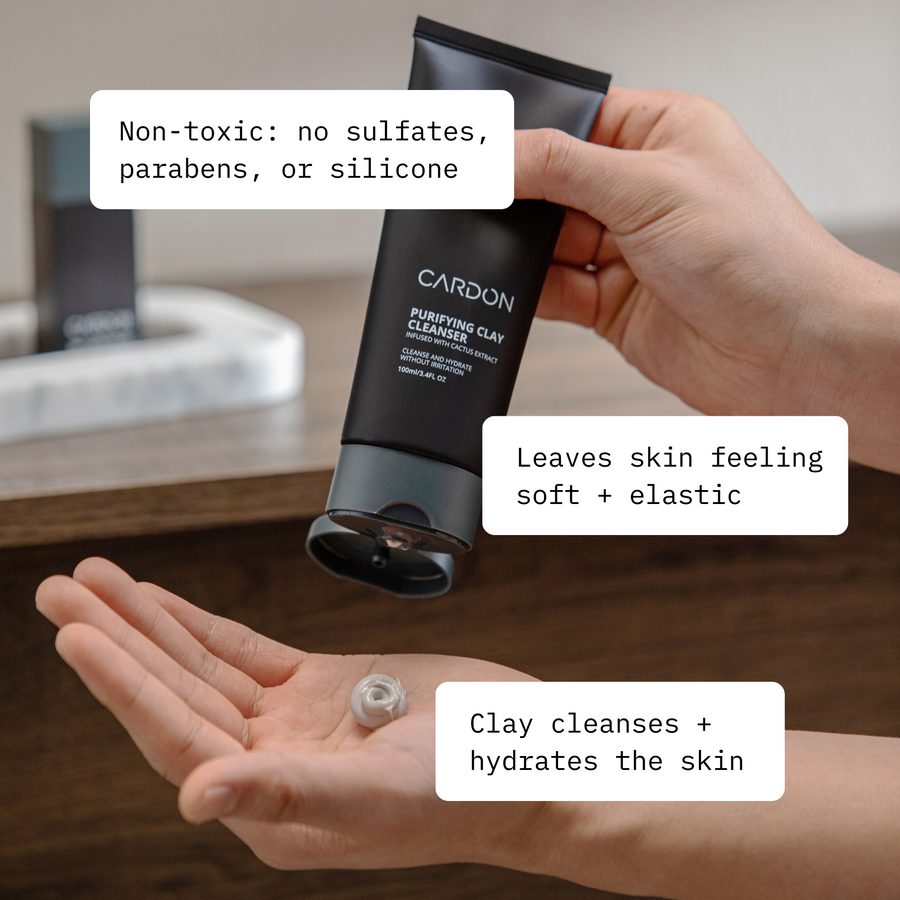




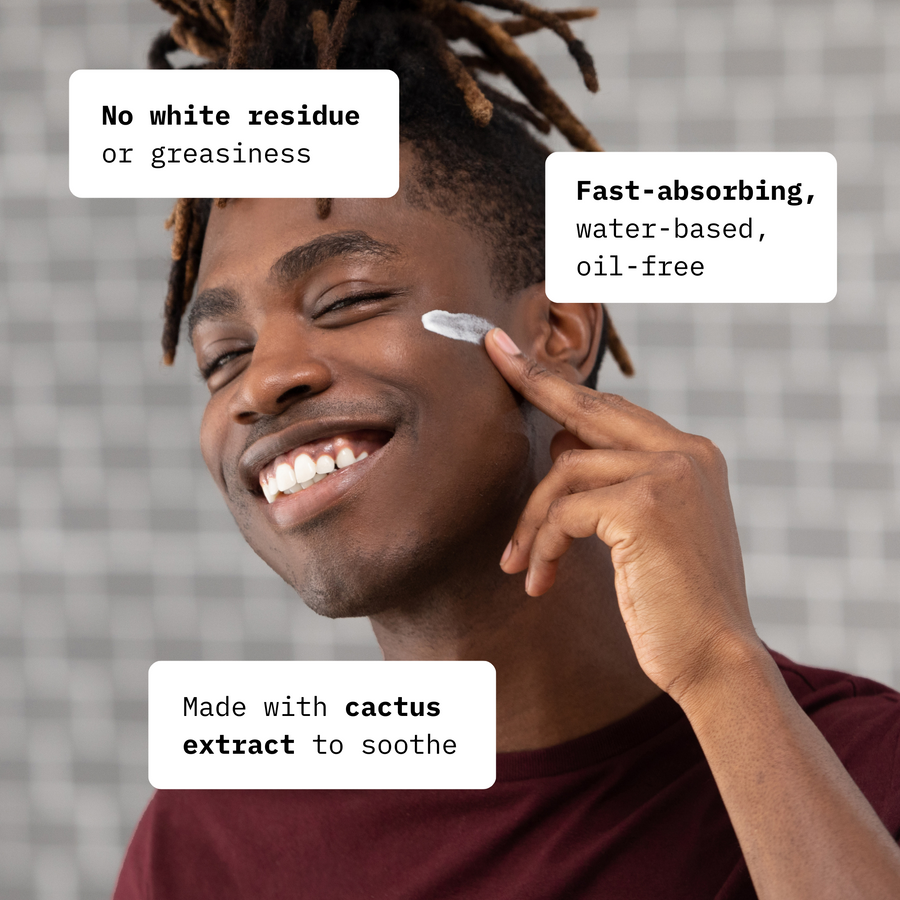
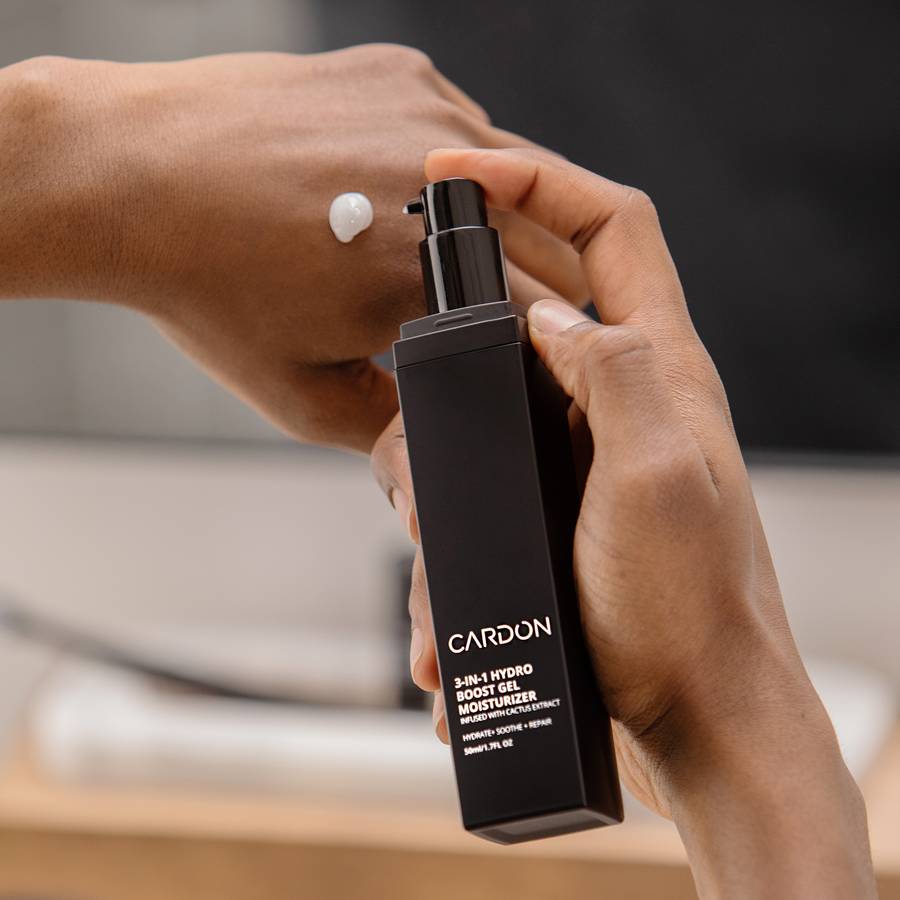
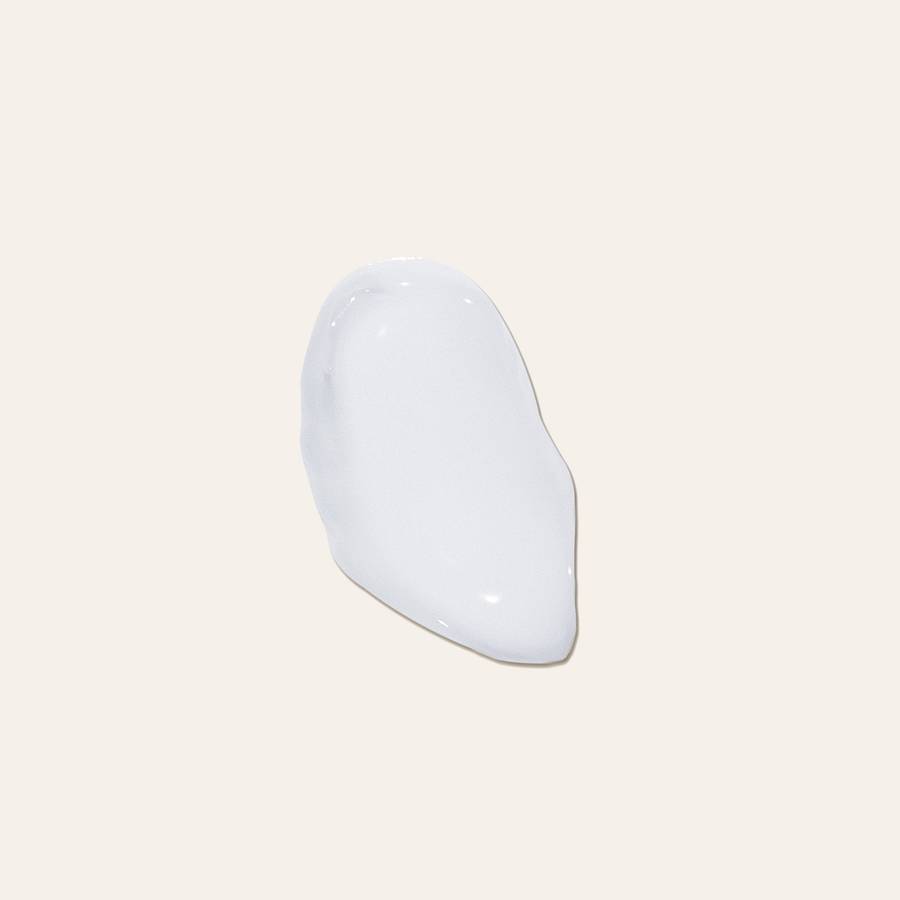
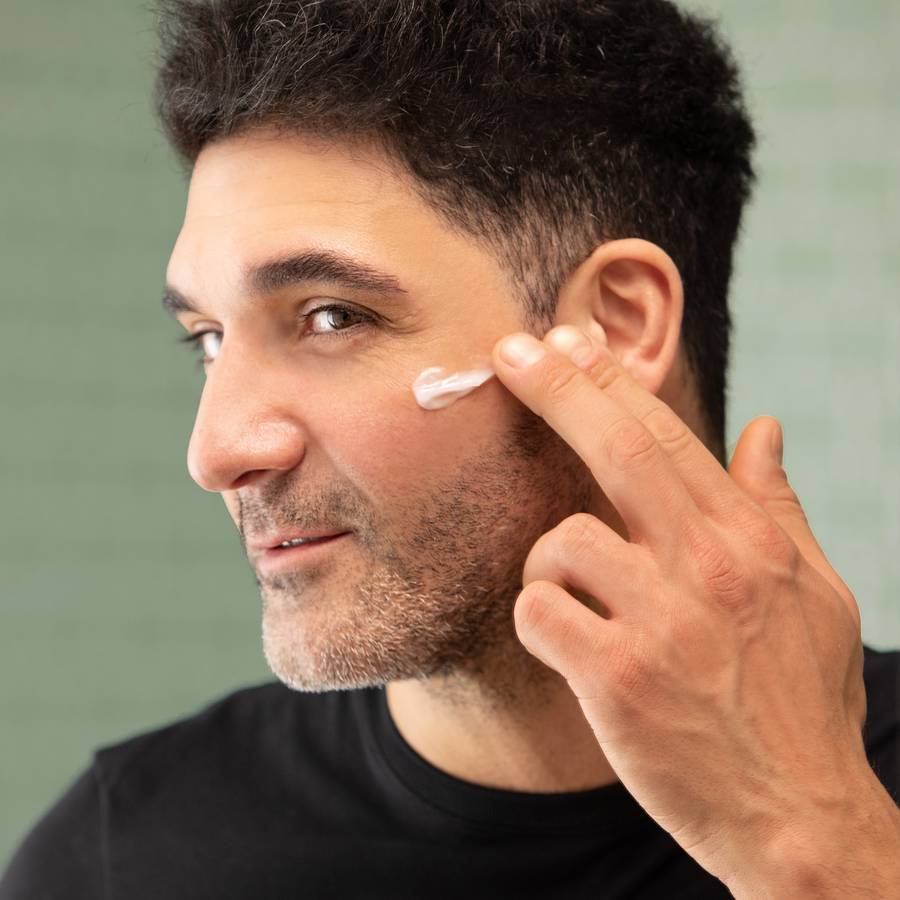


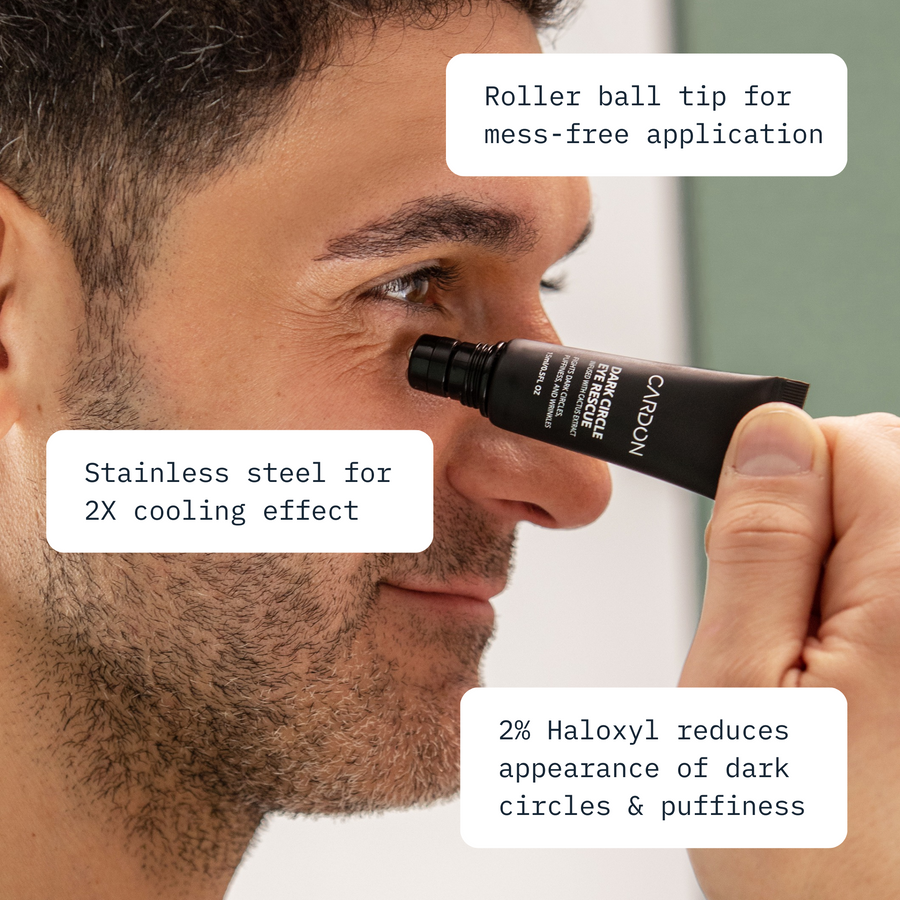
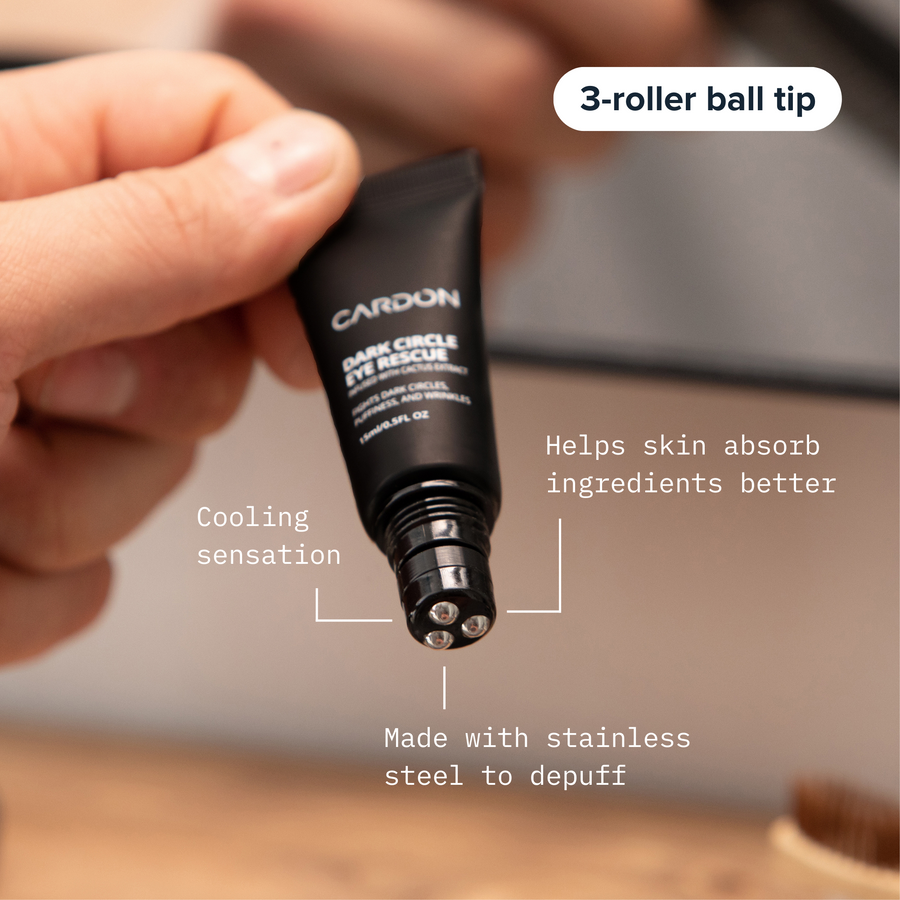

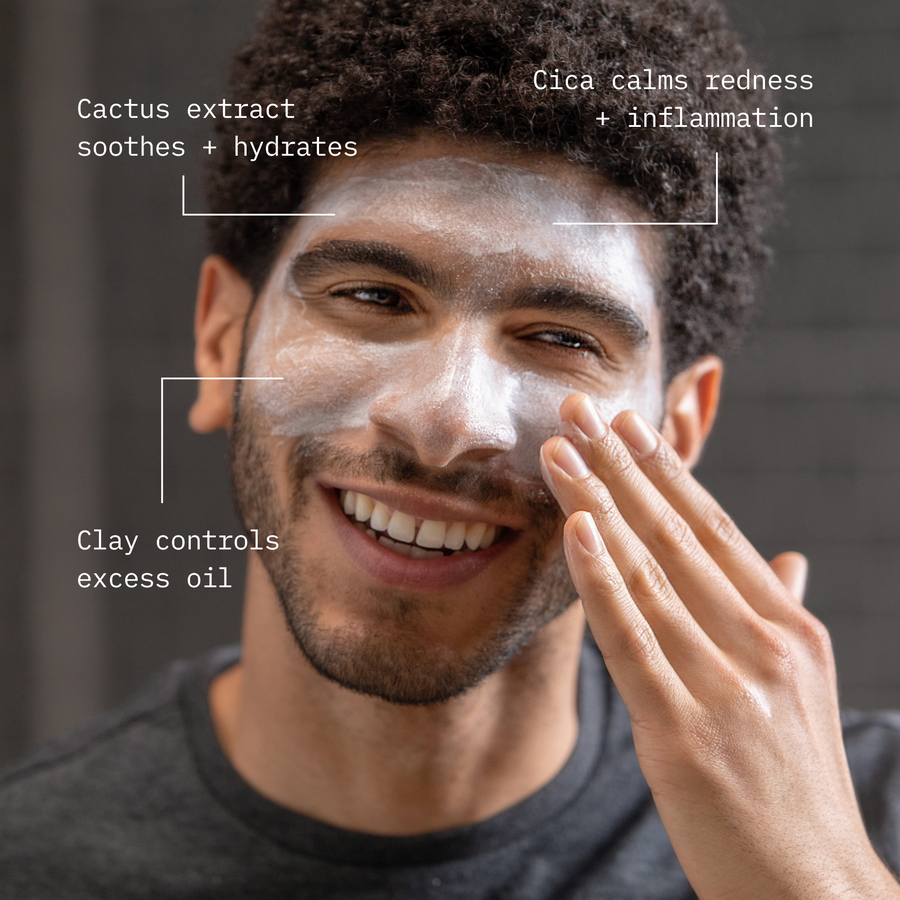
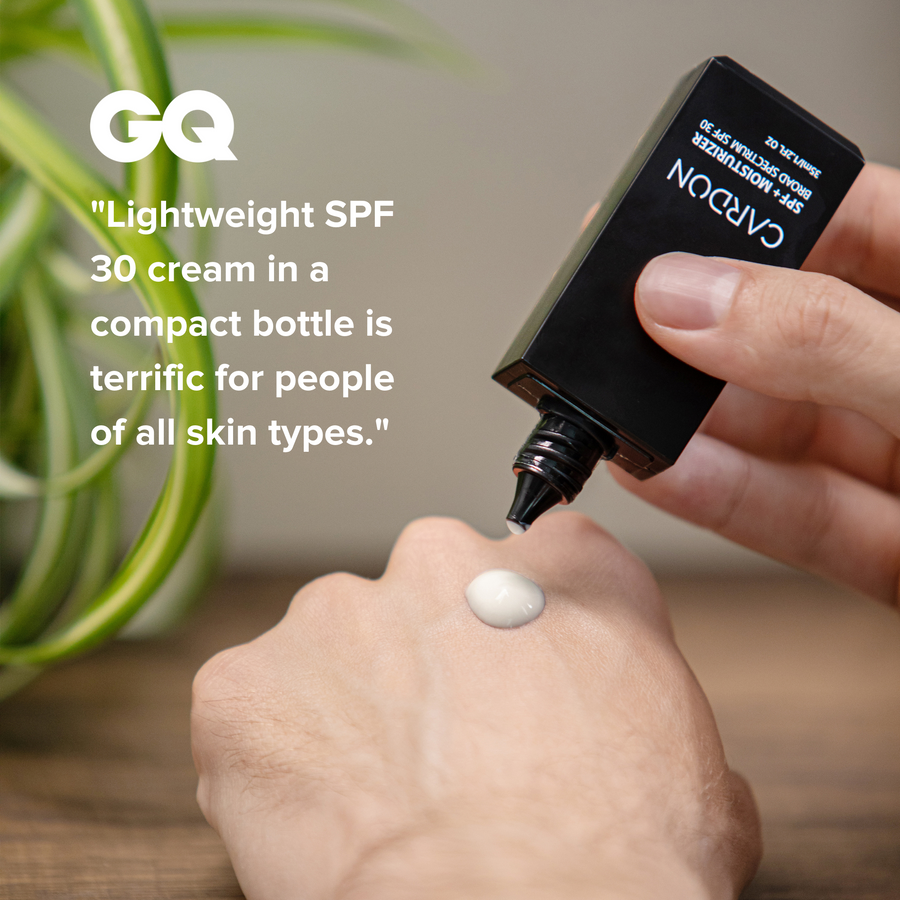
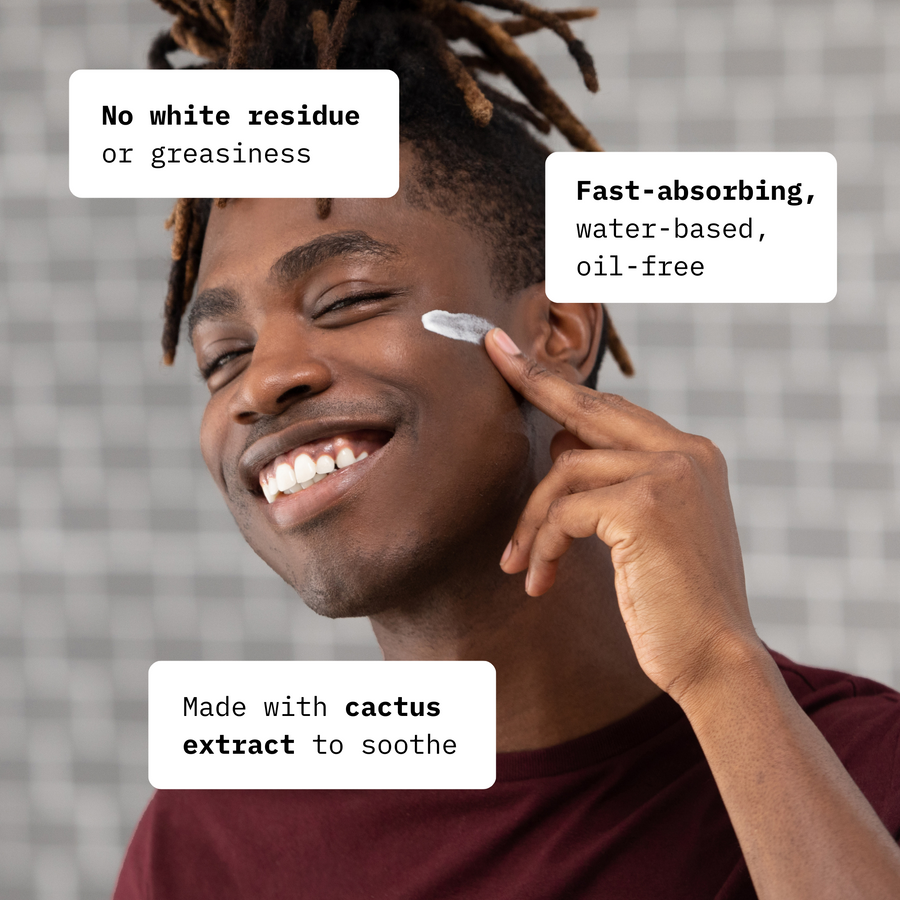

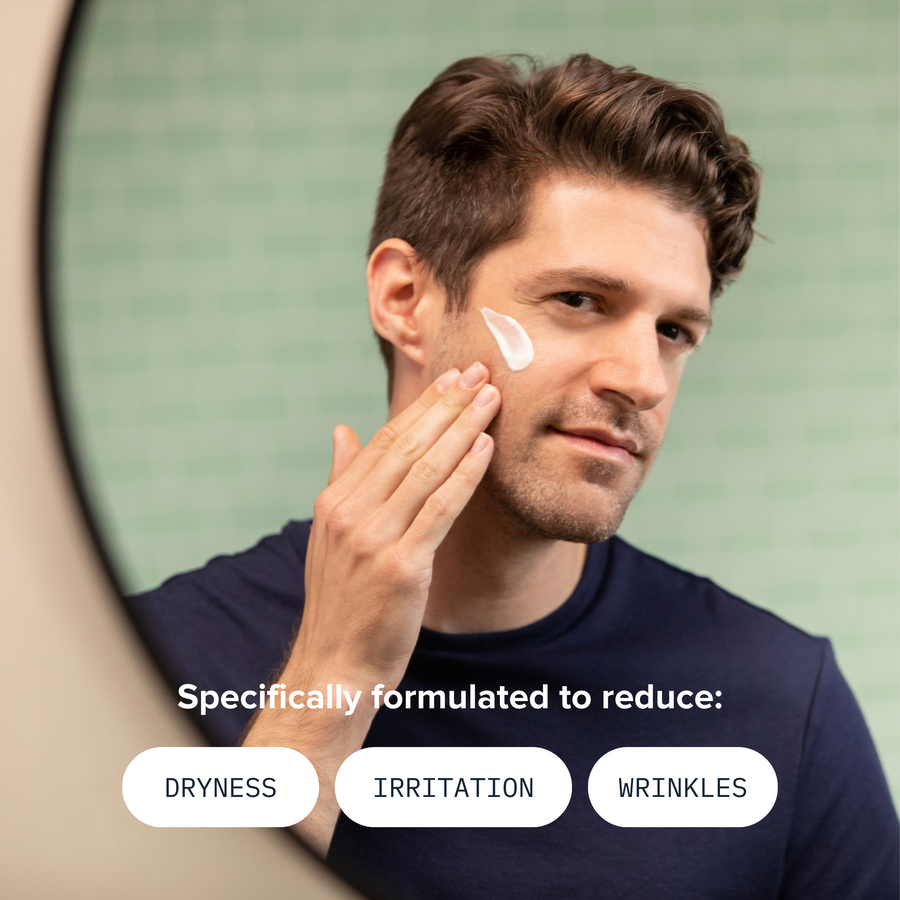
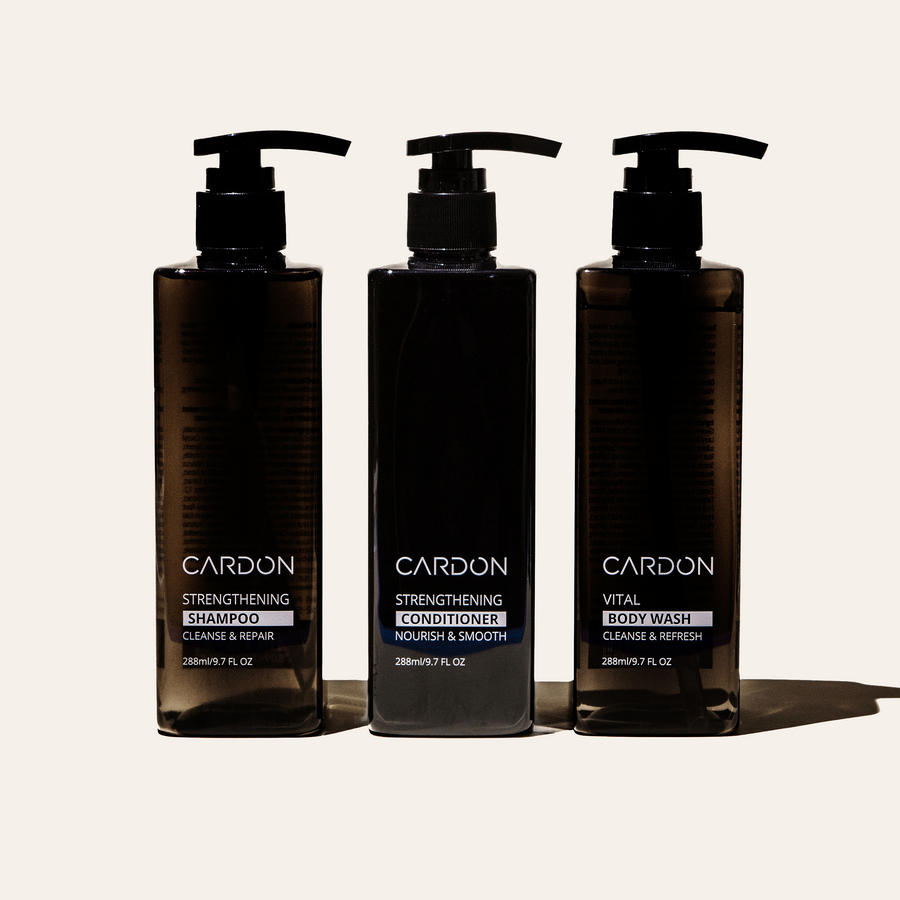




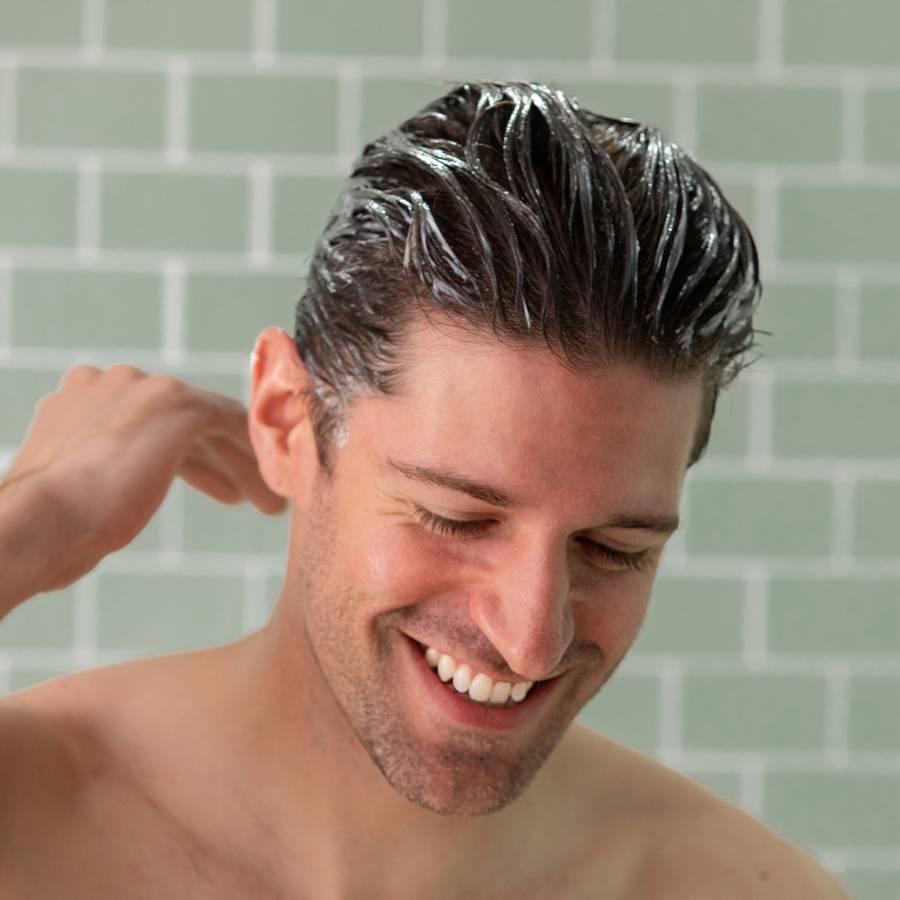
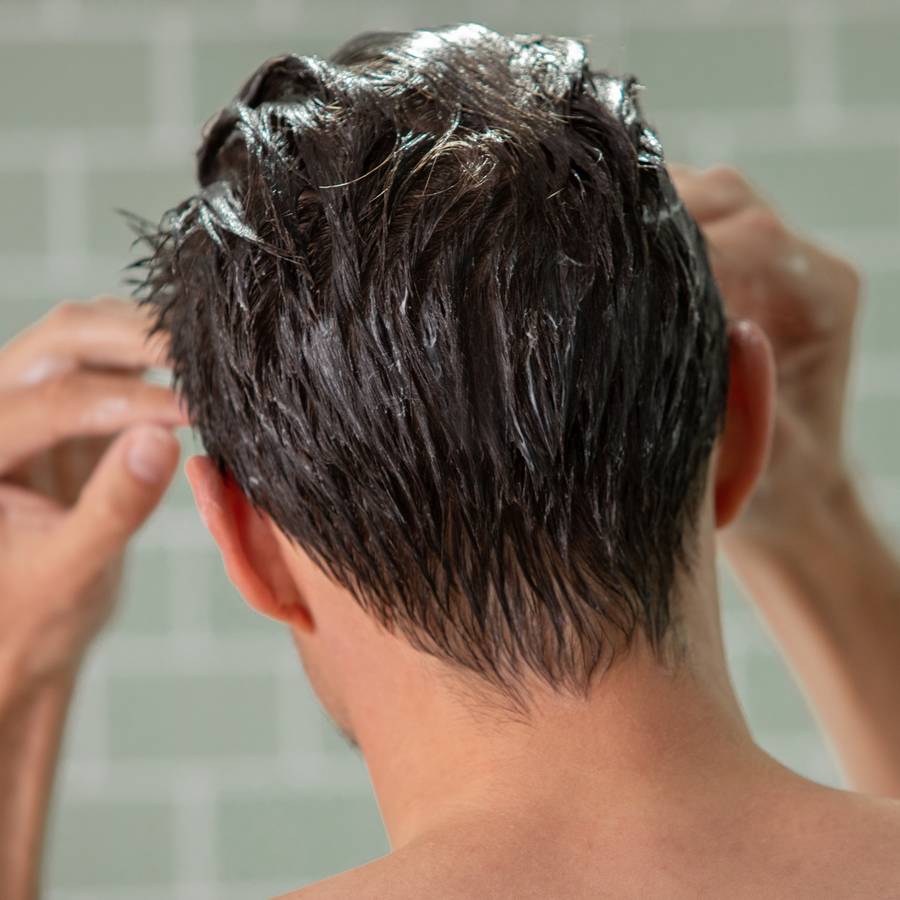

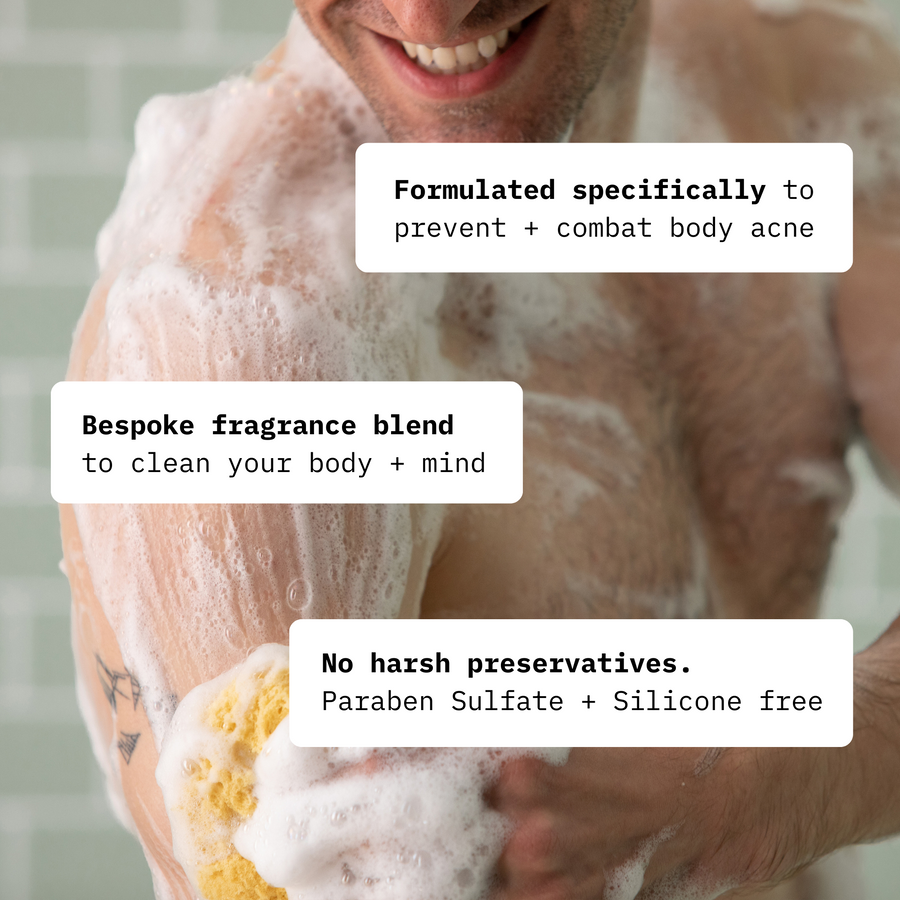

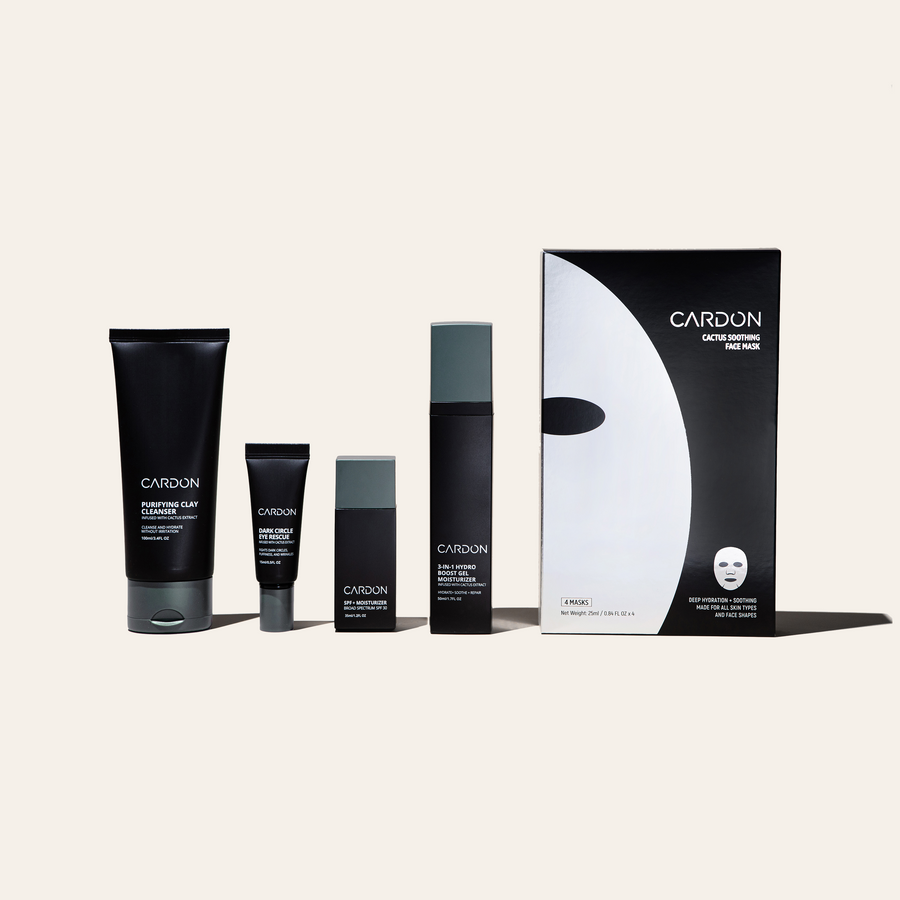
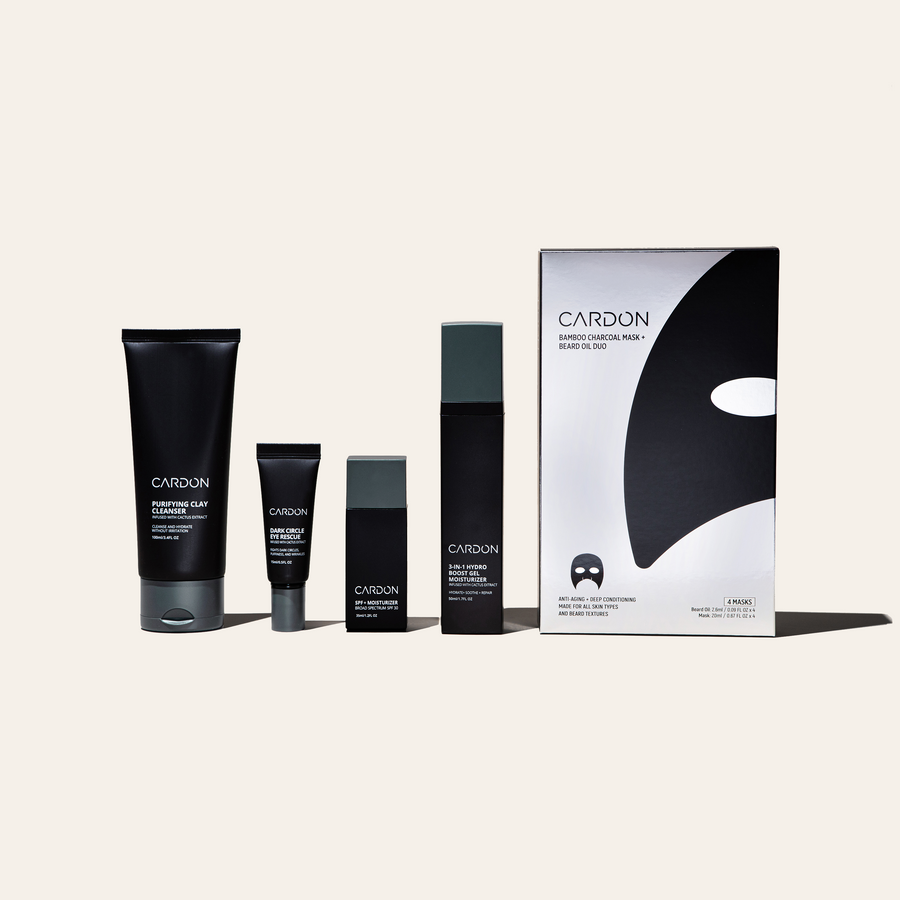
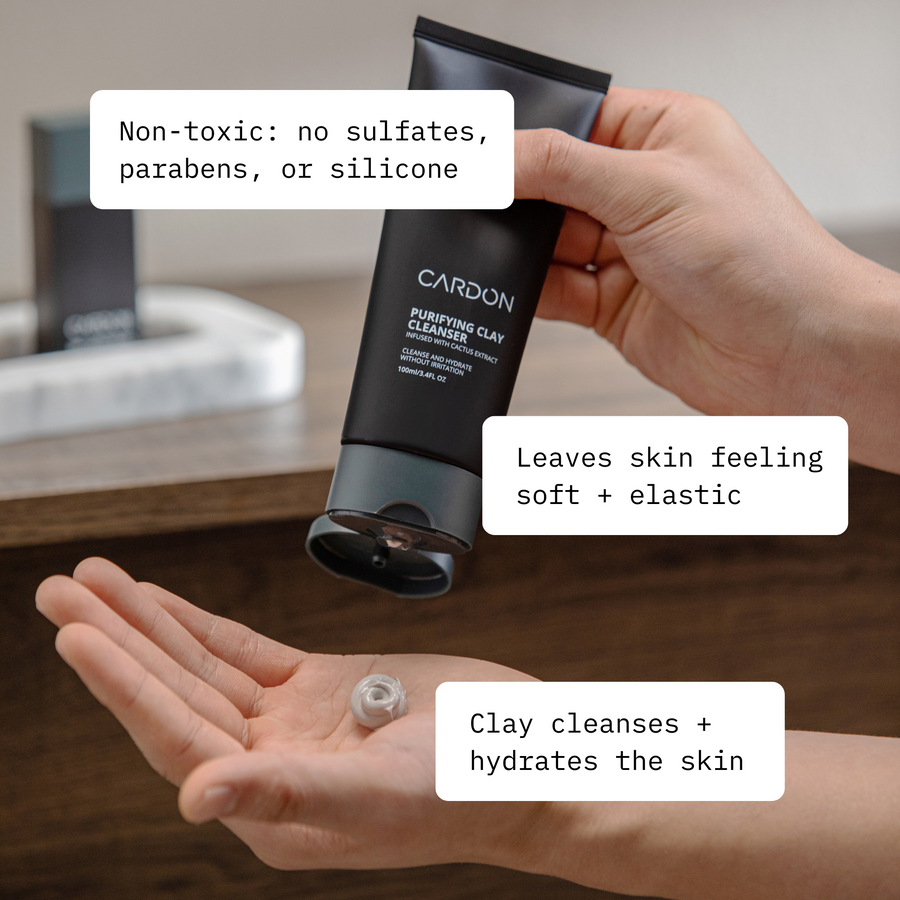
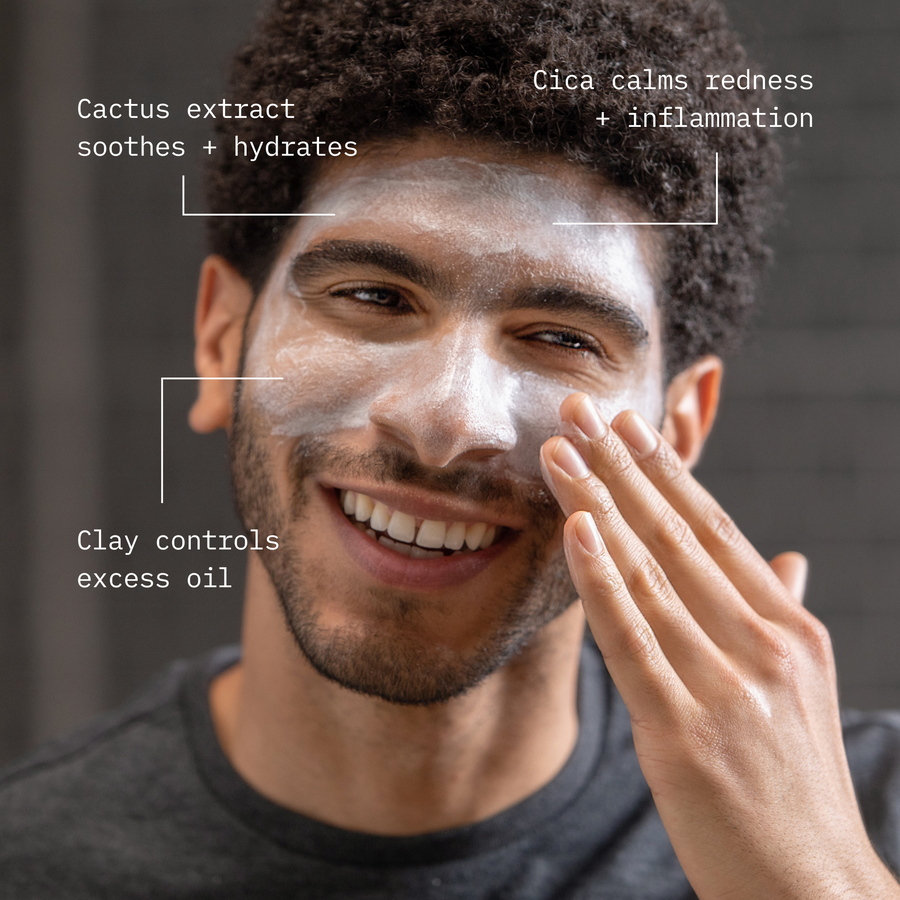


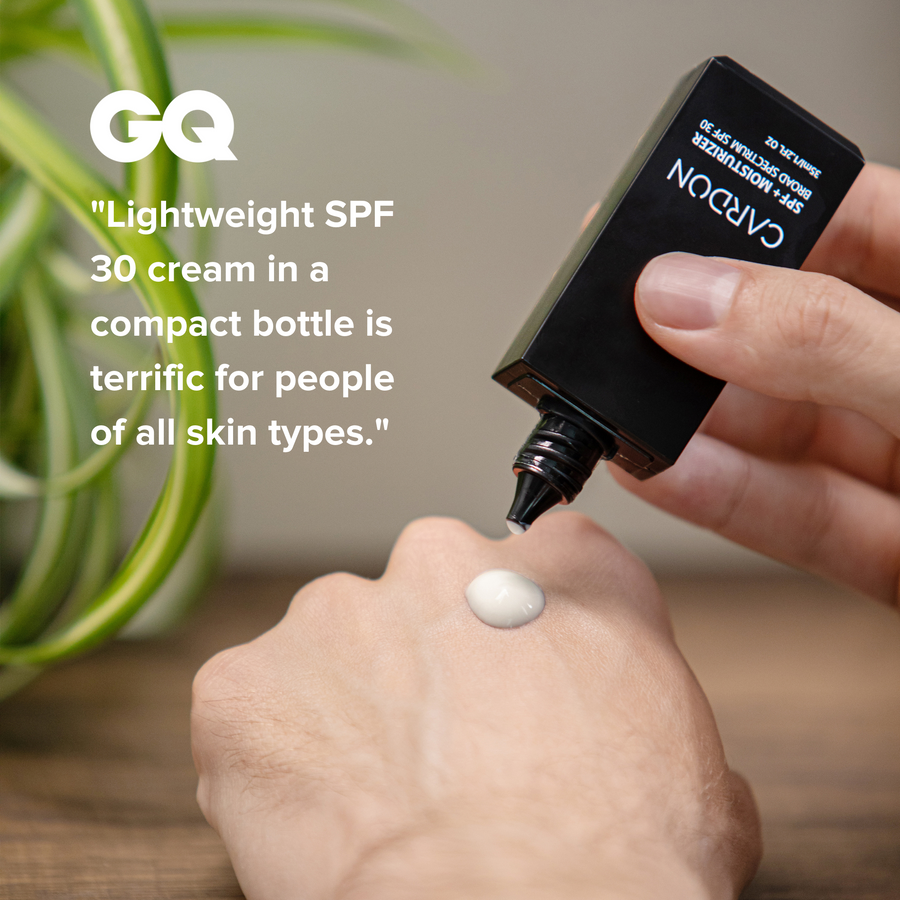
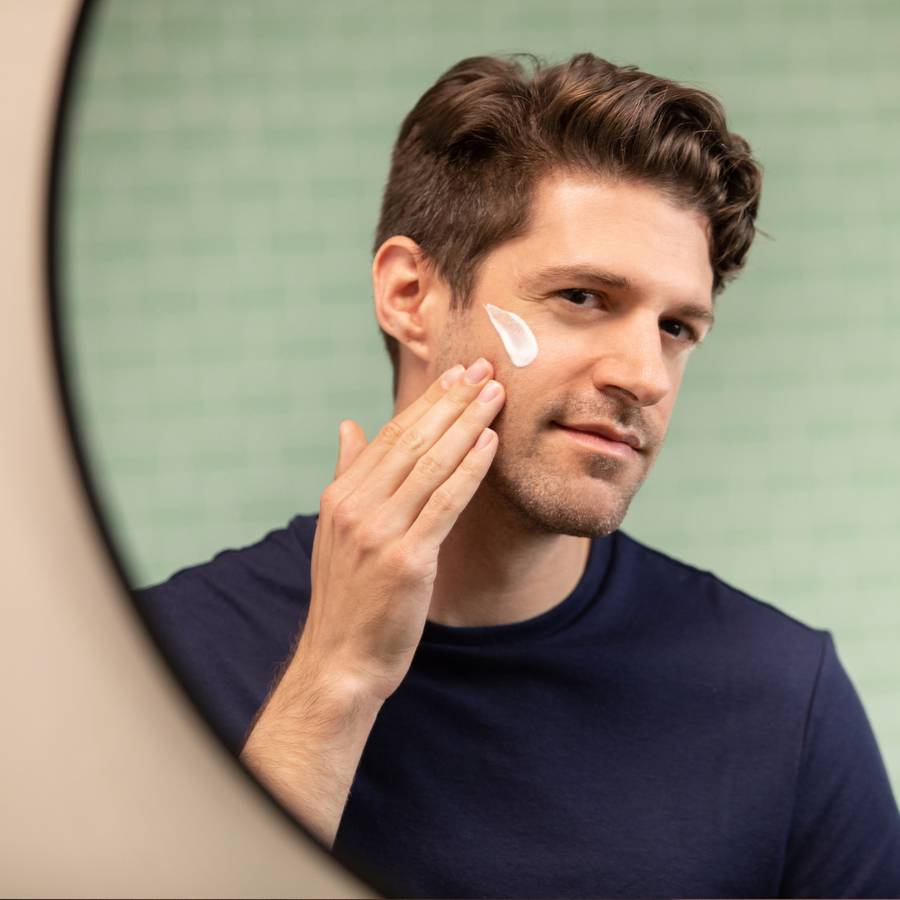
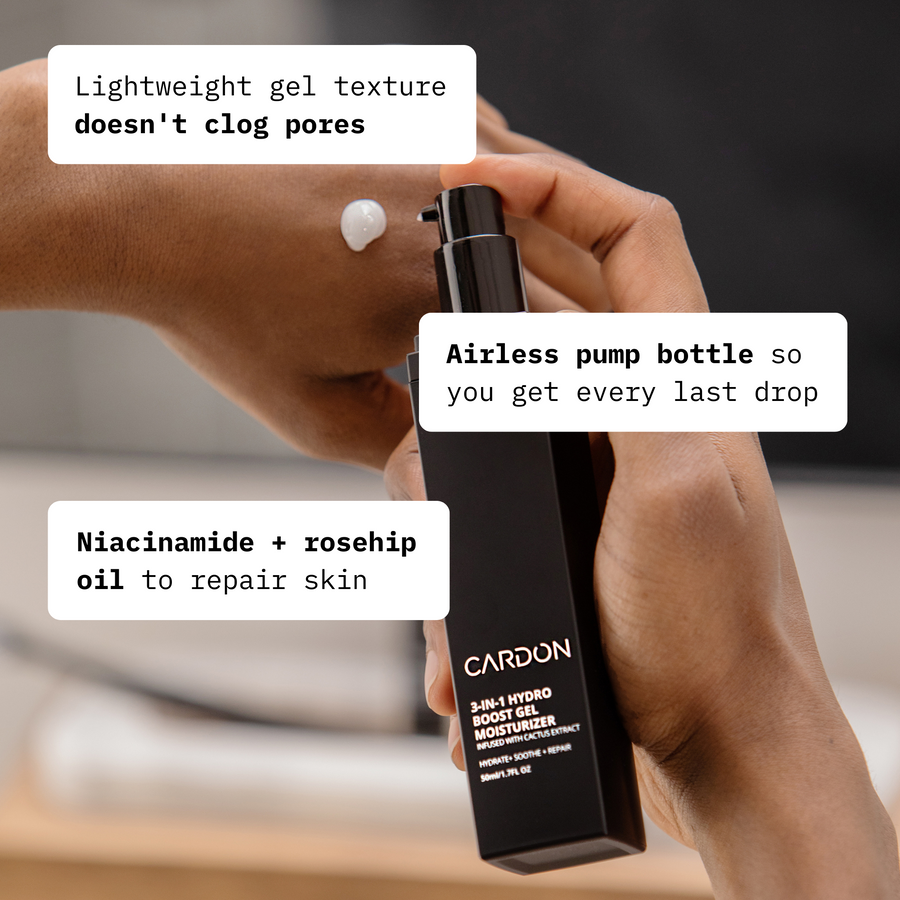


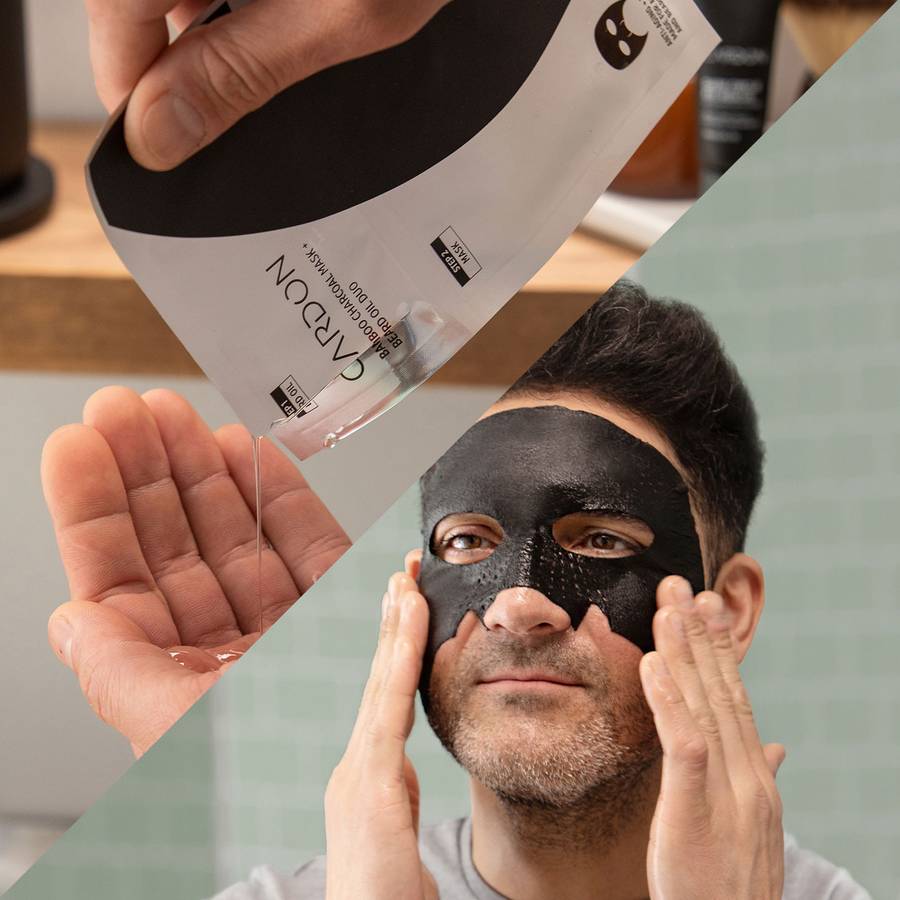
.png?v=1701688884267&options=w_900)


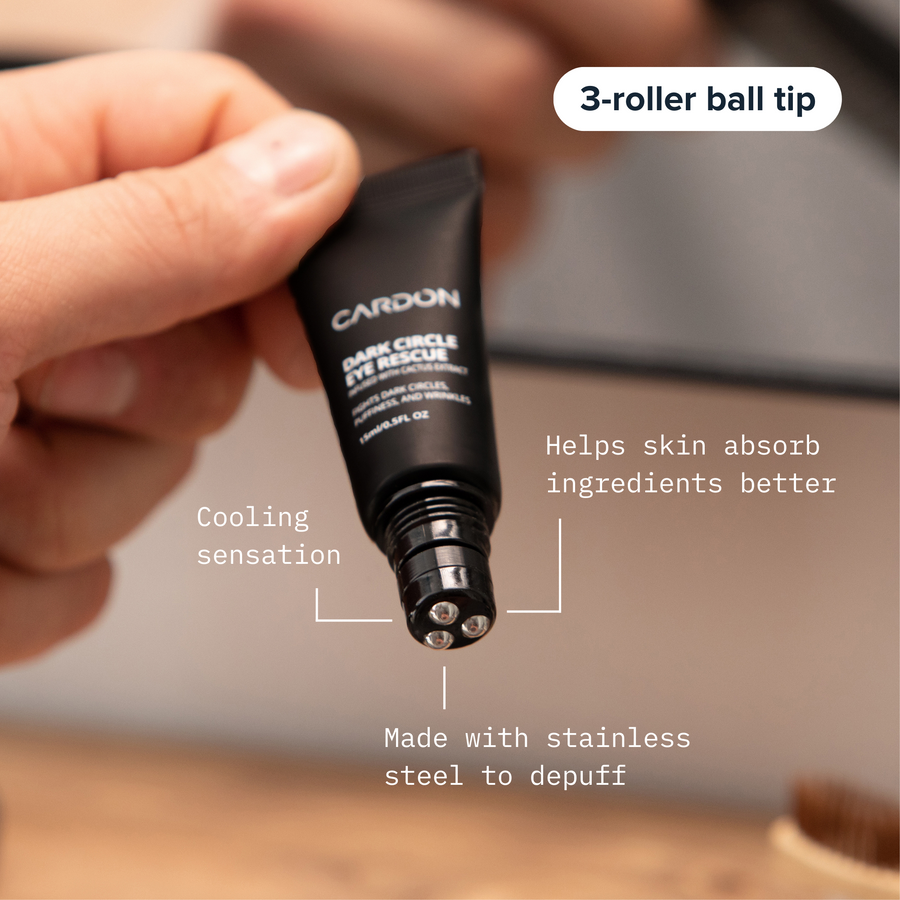
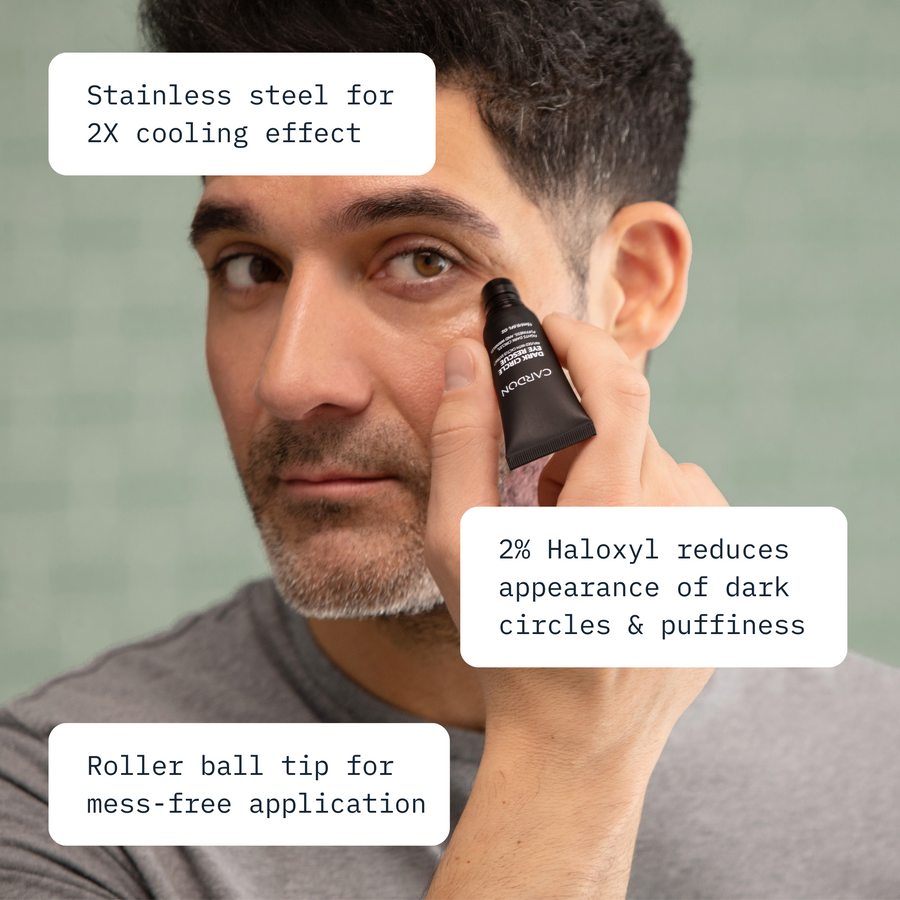
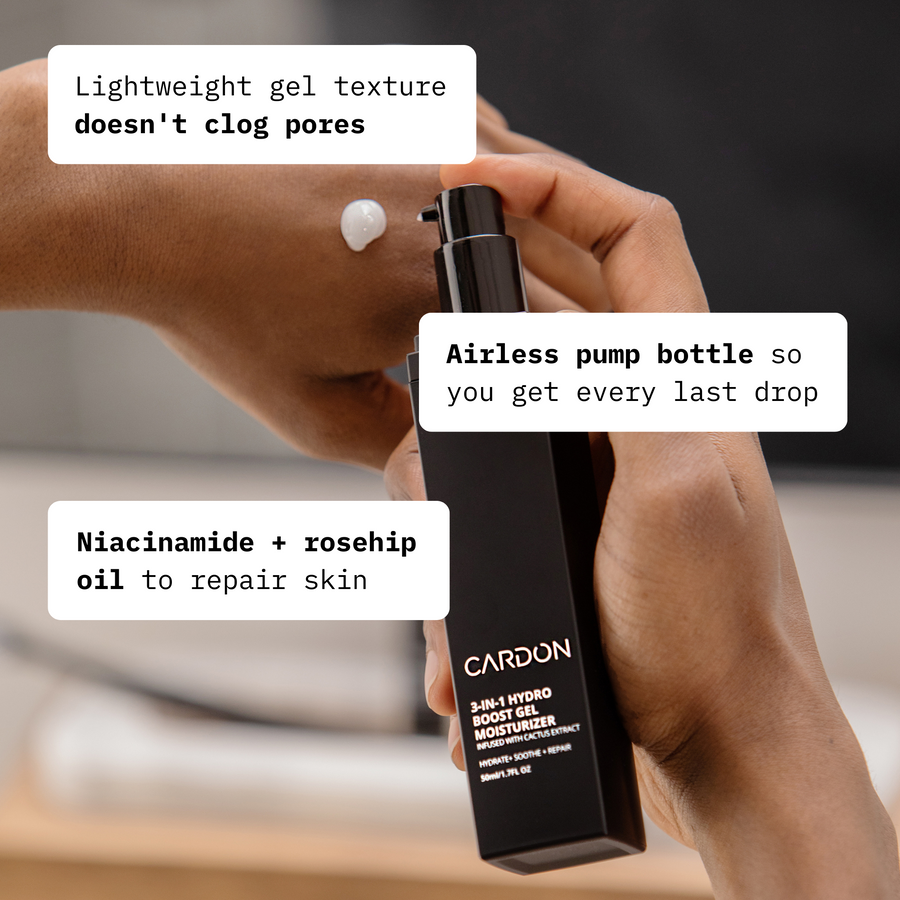

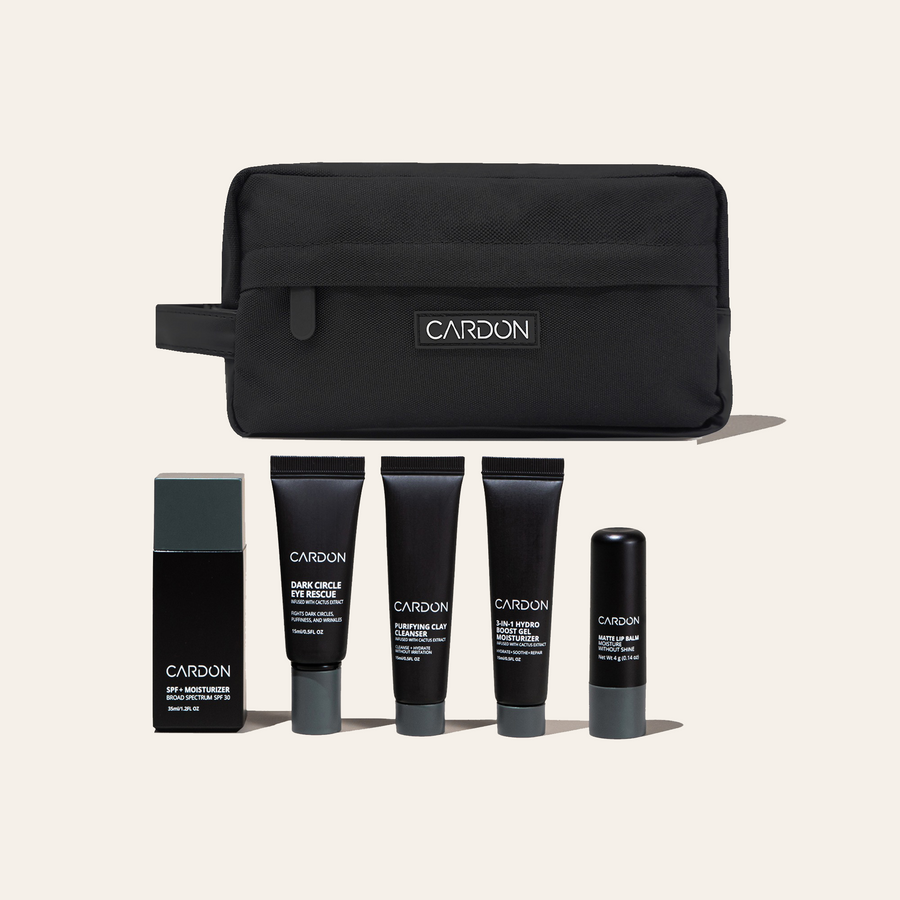
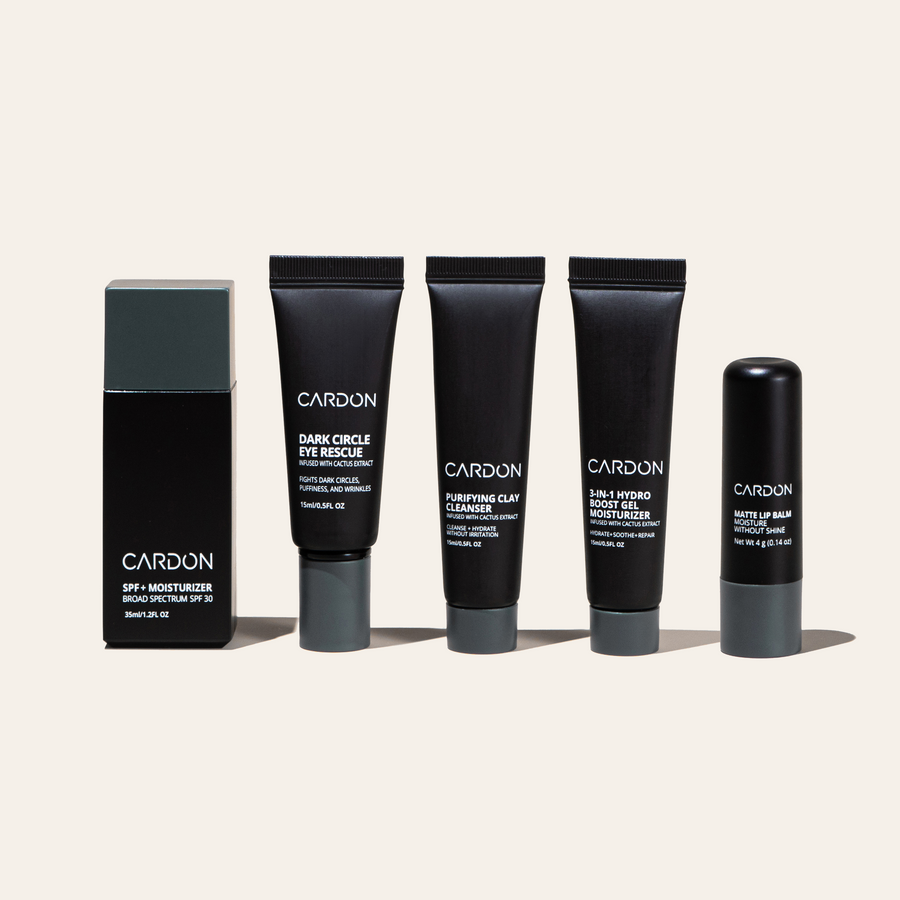
.jpg?v=1660669602636&options=w_900)
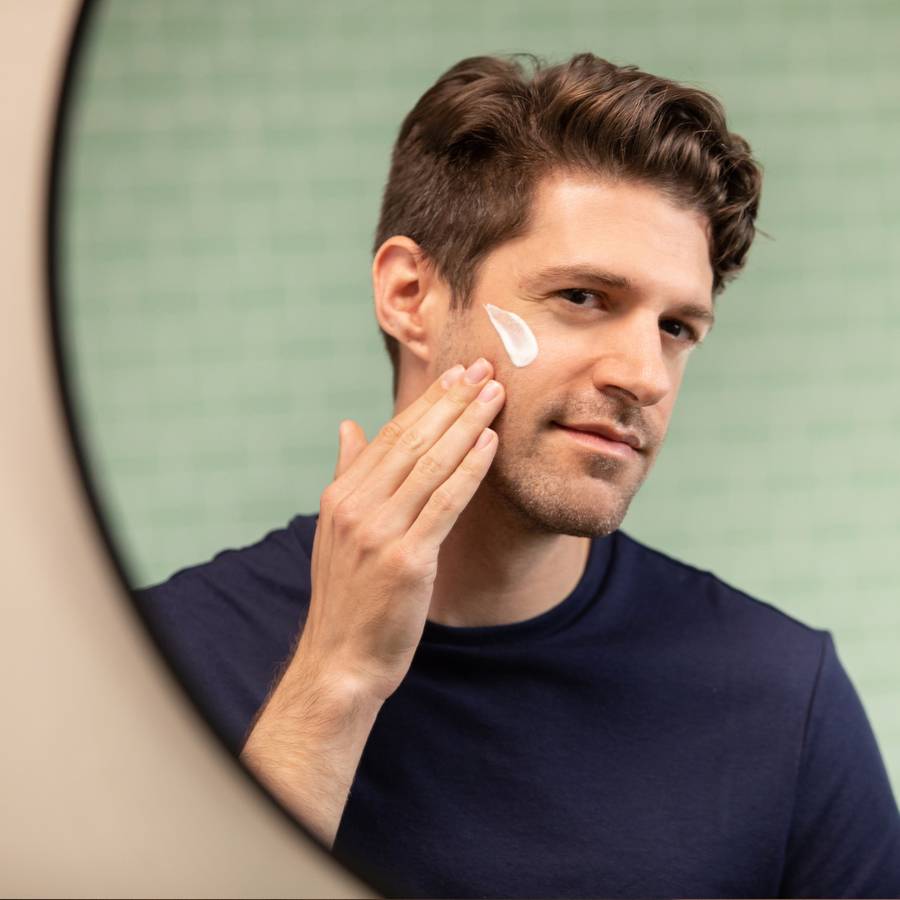
.jpg?v=1660669712802&options=w_900)
.jpg?v=1660669523094&options=w_900)

.jpg?v=1660669849450&options=w_900)
